#so my playthrough has a chance to be more unique and not influenced by what I've seen before
Explore tagged Tumblr posts
Text
I love when I'm in the throes of a new hyperfixation and there's like a bajillion ways to engage with the media, it's like the antithesis of boredom
#there's like 10k (idk the actual number but at least 10k) fics on ao3#plus many hours of the game to play#and also streams/videos of Other people playing the game#it's great#what's best is that I very much was familiar with it before I bought it to play it myself#but I'd forgotten like 90% of the details of the game#so my playthrough has a chance to be more unique and not influenced by what I've seen before#anyway. I won't be saying what game I'm talking about because I think if I started blogging abt it candidly I'd lose followers lmao#I mean you could probably make some guesses but. I'm not talking about it beyond this post
0 notes
Note
For the fandom ask game: 3, 13, and 15? (Yttd and/or ace attorney)
I'll do yttd first and then ace attorney
3. a character that fandom has helped you appreciate
It's certainly Midori. I didn't really get his appeal initially but several posts along with some YouTubers convinced me that his character is interesting. For me he's the mad sadistic scientist combined with childish desire to play, except he plays with people. Not in normal way but like with toys. I used to think he's not that intimidating or scary but looking back to how he made everyone sign the contract and how he influenced Shin Midori can be terrifying. The fanarts really capture his playful madness or his unhealthy obsession with Shin. Overall I feel like I have a better grasp on his personality though of course I still can be wrong about him
(I also really hated Shin at first but that's due to my peculiar style of experiencing yttd where at first I thought he was Midori and I didn't watch playthroughs fully so I actually had little idea what was going on in this game. It was fun being so wrong. But analysis of many people showed me that not only he wasn't with kidnappers, he had reasons I could get behind. So hatred was very short-lived)
13. your favorite type of fandom event (gift exchange, ship week, secret santa, prompt meme, etc)
I really love the draw it in your style events! Everyone makes their own spin on the original art so the little details here and there from different people are fun to notice. Everyone, absolutely everyone adds something interesting, something that makes their fanart unique, while capturing the initial idea. And I like your fanarts there too of course!
I also adore the whiteboards! They create a special, warm sense of unity where you can contribute too. And you can stay anonymous if you want to. I even drew Kanna and Nao once, though as I drew with touchpad of all things it was kinda difficult
15. the character that always makes you smile
Sometimes it's Kanna because she's so sweet and innocent and kind I just want her to be happy. And I kinda relate to her.
Also, maybe not always but quite often Shin can really brighten my mood. Not only do I relate to him in many ways, he became my inspiration to become better. Like I don't know if I sound melodramatic but one time I was thinking about his infamous zero and why he, the smart guy, had no chance to survive. I thought how he manifested his zero into life by believing in it while not believing in himself. I thought about how if he would have been more confident he could have avoided the mess he created at least partially. If only he loved himself more... Suddenly it occurred to me that it was exactly what *I* needed. To not bring myself down, to not overthink what I did wrong, to not compare myself with others. To respect myself for who I am. I imagined that Shin was saying to me "don't hate yourself" and "love yourself" and it hit me. This guy has been my comfort character ever since
The ace attorney ones:
3. It's probably von Karma and Sholmes. I don't really like irredeemable villains but once again he seems so entertaining. On the second rewatch I really appreciated his unapologetic evilness. The guy caused it all for the most petty reason imaginable. And he's perfect to the point where expects Phoenix to cross-examine the parrot. He also has been carrying a bullet in his shoulder for fifteen years. Really what a character. One certain channel (RPG gamer? I forgor how it's named) certainly helps with iconic "what can I say except you're guilty".
As for Sholmes, he didn't feel like original Sherlock Holmes with his enthusiasm but in the end he is your reliable ally that wants to help you. His that one dance is 20/10 and his relationship with Iris is super sweet. I didn't read a lot of fanfics but in the great ace detective his other side is explored, which helped me realise he makes such obvious mistakes due to raising a child, so he uses same method of teaching with Ryuno.
13. I'm not active in ace attorney fandom now but I loved the music competition on Reddit. People took their time to explain in details why they either disliked a soundtrack or defended it. The battle was intense as hell. Shame I don't remember the results
15. I absolutely love Edgeworth and his smug swag, his character arc fascinated me. At the time I thought that his character was literally perfect with balance of flaws and good qualities. Some may say he's too kind in AA2 but I love how he comforts Sebastian too much to care. Maybe there's some plot holes in Rise from the Ashes but still not terrible enough (or they are explainable even, I don't remember). For me he's the example of good writing and I enjoy his journey to the point where I like the first investigation game too
#Huh this is it probably#Thanks for the ask:3#I loved answering this#Sorry if the third answer is a bit personal but he really helped me out in a way#Okay now wait I'll think what to ask you <3
5 notes
·
View notes
Photo
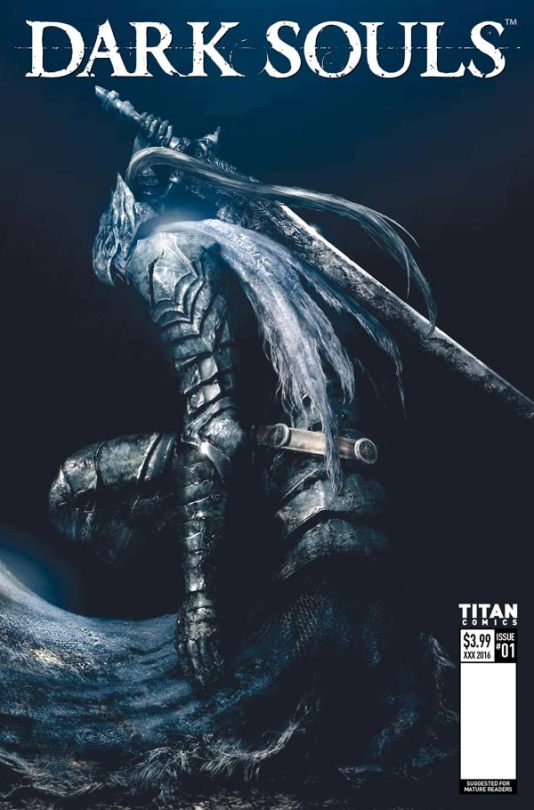
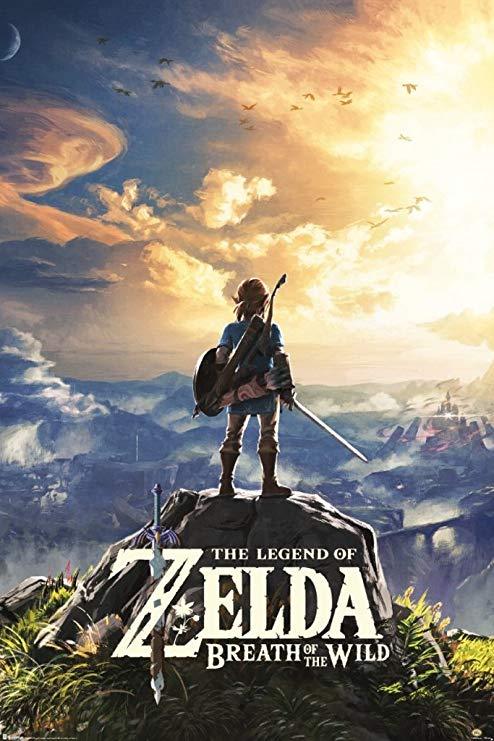
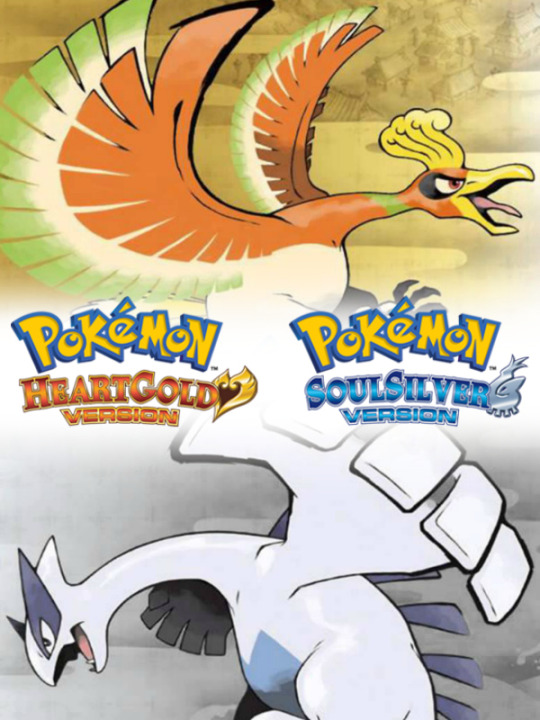
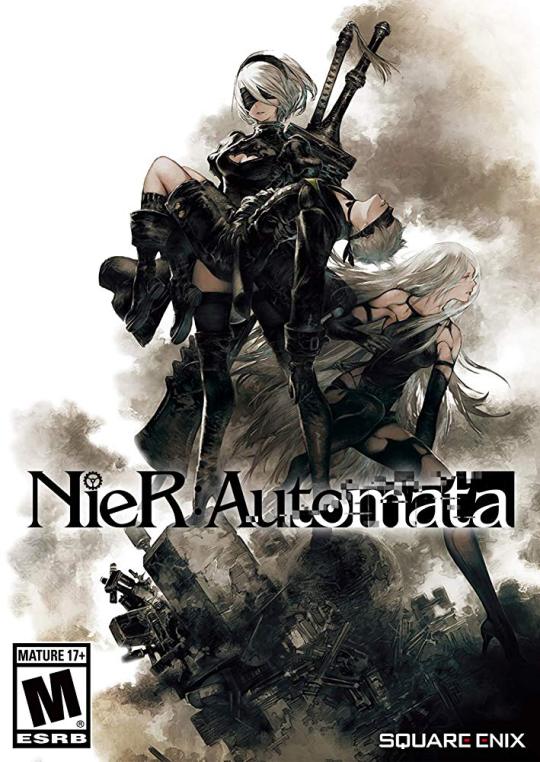
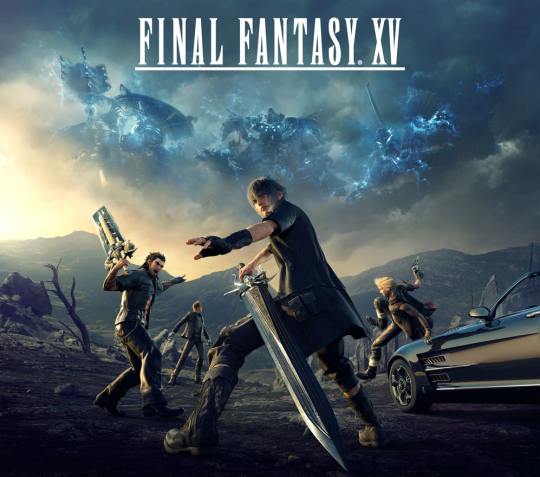
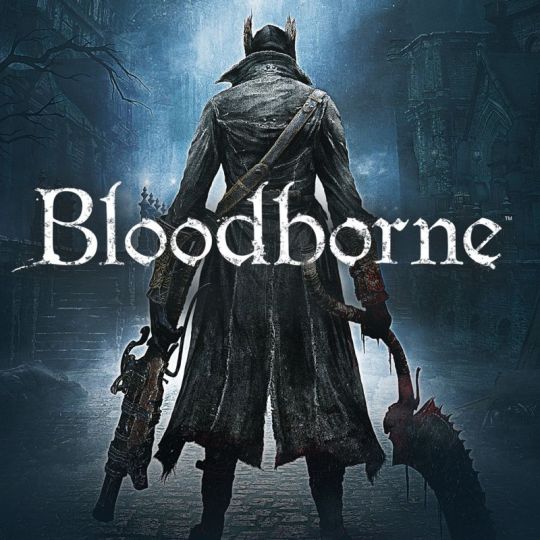

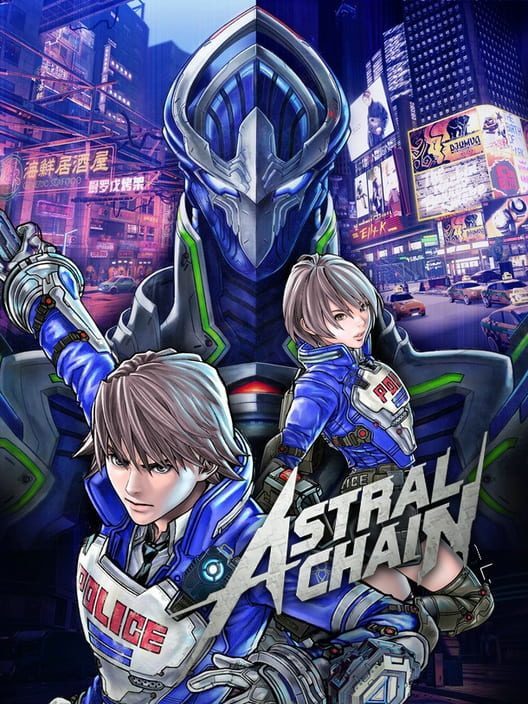

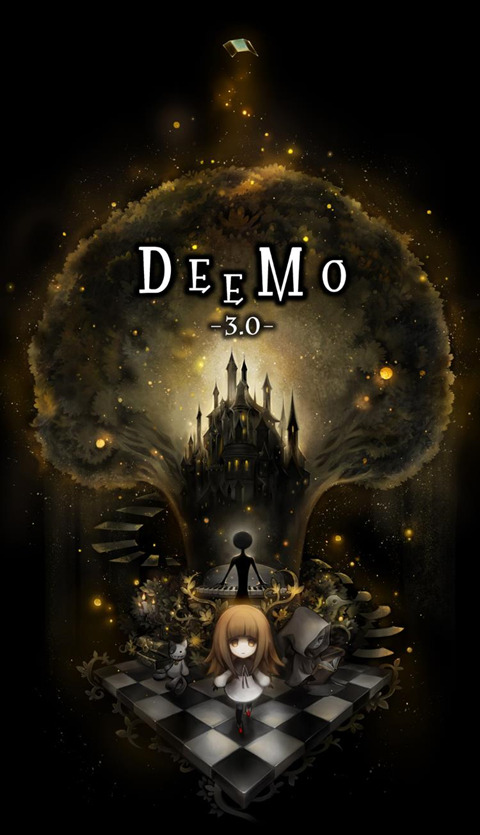
With 2019 coming to an end, I wanted to make a list of my personal top 10 video games that came out this decade. I was 12 in 2010, and now being 21 video games have always been important to me! Many of the games that are the most dearest to me sadly came out before 2010 (HG/SS barely made the cut with the NA release). I tried to not make recent releases be part of my bias (FE3H lol), plus there were many games such as Bioshock 2, Fallout New Vegas, DA2, ACNL, and many more that I love but this list would have been too long!
1. Dark Souls (2011)
2. The Legend of Zelda: Breath of the Wild (2017)
3. Pokemon HeartGold/SoulSilver (NA 2010)
4. NieR Automata (2017)
5. Final Fantasy XV (2016)
6. Bloodborne (2015)
7. Fire Emblem Echoes: Shadows of Valentia (2017)
8. Astral Chain (2019)
9. Granblue Fantasy (2014)
10. Deemo (2013)
Dark Souls: Although I haven’t really completed the game personally, I’ve seen many playthroughs and videos about the story and characters. Hidetaka Miyazaki is absolutely awesome in creating those fantasy worlds and characters, everything that Dark Souls ended up influencing was pretty groundbreaking. And the OST is always enjoyable to hear again.
Breath of the Wild: This game took quite a long time for Nintendo to release, and when it finally came out on the final year of the WiiU and the birth of the Switch... it was pretty emotional. Also to realize that Iwata-san never made it to see the rise of Nintendo’s success after the failure of the WiiU gets me everytime, but I hope he sees all the smiles and joy BOTW has brought since its release. The game changed not only what is a LOTZ game but what is an open world, I’ve played it twice and each time I picked it up was a new experience.
Pokemon HG/SS: This game was released around Fall 2009 in Japan, but for NA it was out in March 2010. I still remember the anticipation for Spring Break to arrive in order to spend all my week playing it! I never had the chance to play the original Gold/Silver, so everything was new to me. My 12 year old mind almost exploded when I ended up finishing the Johto League only to find out we were ALSO traveling to Kanto!!! I was shook! This game is amazing, and I’ll forever wait for them to somehow add our Pokemons following us around, that mechanic was so cute! And of course the OST is golden, and I can always listen to it and be brought back to those days.
NieR Automata: I never played any of the past NieR games (although I was aware of their existence). The first trailer I ever watched had the “Become as Gods” song so I was hooked from the start! And learning that PlatinumGames and Square Enix both developed the game made me hyped for its release. I love everything about it, the characters, story, music, themes. By the time I finished the game, it had brought me into a journey of questioning so many heavy topics about life...I really wasn’t expecting that about a game. Not going to lie it may or may not have brought me a mini existential crisis but with a game made my Yoko Taro can’t be too surprised.
Final Fantasy XV: The game I so often heard fabled tales since as back as 2009 and the hype was just building up for this game! I remember going to the movie theater when they were having special screenings for the Kingsglaive movie (I dragged my friend, little brother, and mom lol). The game went through so much, many cuts and changes were made but I personally ended up liking what we got. Still super sad that many unreleased DLC’s were cut off, but the love I have for the characters and music will always stay.
Bloodborne: Hey another Miyazaki game, what can you say...the man just makes brilliant games. He took everything I love about gothic, victorian era, and Lovecraftian esque and made this extraordinary game. I’m here hoping that maybe this 2020 we can hear a slither of news of Bloodborne 2, the theme for this game is too good for them to leave it as only one game.
Fire Emblem Echoes SoV: After the train wreck that was Fates, I literally was not expecting for us to get another FE title so soon! Japan waited 2 years for Echoes but thanks to localization giving us Fates in 2016, we got SoV a year later. I never heard of Fire Emblem Gaiden, before this game I never played any of the Japan only FE games, so when news was coming out about this title I tried 100% to AVOID it. Why? Because this was the first time I could start a FE game without personally knowing anything about it, and when I first played it, right from the start it felt so different, it didn’t felt like a Fire Emblem game (which isn’t bad at all). With the new art direction it also felt like a whole new world, I love Hidari and I hope we get to see them more in future FE games. The game had a simple plot which I didn’t held it against them, I knew this was a remake, and personally I’m glad they didn’t added things like an Avatar or S-Supports. They stayed true to its original source, and SoV will stay as my personal favorite FE game. Also Heritors of Arcadia will be the best vocal theme we got in FE series.
Astral Chain: Oh snap another PlatinumGames IP? This developers are just too good! Astral Chain came out of nowhere although I’ve heard it was worked on for a long time, supposedly even before NieR Automata was developed. I really enjoyed the game very much, from all the 2019 games that came out it caught my eye and I went in with not too many expectations but I had a good time. The story took a crazy turn and I could see some similar themes as NieR Automata but it held its own ground to become unique. The fighting mechanics were so much fun to play and the music was also awesome! I wish more people talked about this game since it is Nintendo’s new IP. I hope we can get the twins for Smash Ultimate!
Granblue Fantasy: I first new anything about Cygames back in 2016 when I saw the OP for Rage of Bahamut. After Seeing the OP for season 2, seeing Azazel in all his glory I knew I had to watch the anime! Luckilly Rage of Bahamut season 2 was continuing in 2017 so I was able to catch up just in time for its final 10 episodes. I LOVE Azazel and Kaisar and of course ROB Lucifer! Then to my surprise I found out about GBF, and I was dumb and thought the app was unavailable in the west which is technically true since you need a Japanese account to download the app which has an ENG text option. So it wasn’t until 2018 that I downloaded the game and started my journey through the sky. This gacha game literally changed what is a gacha game to me, the developers listen to fans, the community is fun, and just everything about this franchise is so great. I’m not a hardcore player so I’m not too worry about grids, I’m here for the cute husbands. (Lancelot, Sandalphon, Albert, Grimnir I lov u).
Deemo: I love this game, one of the best app games I’ve ever had. Back in the day I used to play TapTap Revenge and that was my first taste of rhythm games, Deemo brought me back to those types of apps. Whenever I was anxious I could always play this game and pass the time while keeping my mind busy. Plus without Deemo I would have never known artist’s such as Mili. The game is on the Switch which I’m so happy because I was able to just get all the songs without flooding my tablets storage space.
#i won't explain why these are my favs since it will literally turn into an essay#fire emblem echoes shadows of valentia#fire emblem echoes#dark souls#darksouls#botw#loz#the legend of zelda#pokemon heartgold#pokemon soulsilver#ffxv#nier automata#top 10#bloodborne#astral chain#gbf#deemo#video games#list
152 notes
·
View notes
Text
Thoughts On: Mortal Shell Open Beta
I want to start this off by stating up front that I am not a fan of Dark Souls in any way, shape, or form. Don't get me wrong, I don't think Dark Souls is bad per se. I actually really like the world the games have built up. I watch videos on the lore, the environments, the bosses, and I find it all thoroughly fascinating, it's just that when I play video games I like to enjoy playing them, and playing Dark Souls is like bashing my head against a wall repeatedly because I'm using my forehead in lieu of a hammer and these goddamn nails just won't go in the wall. Oh, I've tried to get into it; I've put in two separate six-hour runs, along with diving into Bloodborne because I'd heard that game rewards players who are more aggressive vs the measured style of Souls, but no matter what, I just don't have the patience to be punished over and over again by a game that actively hates me. So imagine my surprise when I not only got into Mortal Shell, but actually persisted to play through the entire demo.
Mortal Shell, developed by Cold Symmetry, is a Souls clone and proud of it. Currently, the open beta is available to download via the Epic Game Store. Pre-purchase is up and running for $29.99. The first trailer was released on April 1st of this year, but make no mistake, the game is no joke. Far from it. For those coming in late to the party, Dark Souls's gameplay revolves around slow, methodical combat in which the player has to read enemy patterns in order to know when to strike, parry, dodge, etc. Any enemy in the game can potentially be a bad time, meaning that if the player gets a little too cocky and impatient, a solid run can so south pretty fucking quickly if they're not paying attention to timing. That's literally what the game is: a massive, calculated game of timing, fueled by trial and error. If you die – and you will, frequently – you're sent back to the last checkpoint you camped at or visited or lit up. You'll have one chance to forge your way back to the point where you died, and reclaim all the currency you worked so hard to accumulate, but if you die again before you do, all of it is lost. So essentially we're working with a complex risk and reward system, in which any fight could be your last, any moment could turn ugly, and your character is having the worst fucking day they could imagine.
Mortal Shell takes this formula and puts a bit of a spin on it. Sure, you've got the health bar, the stamina bar – which depletes any time you attack, dodge, or run – the quick items, and the ability to parry and commit heavy attacks if your timing is right. But what it does differently is the character system itself. Most Souls games involve the player creating a character and slowly leveling up as time goes by. You could become a super beast depending on what you choose to invest in. Shell puts you in charge of a Foundling, basically a nameless/faceless lost spirit, who can inhabit the bodies of fallen warriors it comes across. Each warrior – called a Shell – has different attributes which can be leveled up. Some Shells are faster, some are tougher, and each one has their pros and cons to fit your play style. In the beta, we get two, named Harros and Tiel. Harros is a well-rounded fighter, your basic bitch knight class, while Tiel is more of a rogue, which a much higher stamina bar but can be hurt a lot quicker. Regardless of which Shell you choose to inhabit, you're carrying around what has to be one of the most badass swords I've seen in a video game in quite some time. Called the Hallowed Sword, it's two handed and looks like it could ruin pretty much anything if you put your mind to it. It has a secondary attack where it turns into a goddamn spear for massive damage. There's another weapon in the beta, a hammer and chisel, but I somehow missed that in my playthrough. I'm eager to dive back in and find it, but for now we'll focus on the sword. Sweet Jesus, that sword. If a fantasy game had the equivalent of a double-barreled shotgun, it would be the Hallowed Sword.
There's also a catch to hitching a ride in the Shells: if you take too much damage, the Foundling will be knocked out of the Shell, vulnerable and weak. You'll have an opportunity to get back into the Shell, and if you do, it's an instant HP refill and you're back in the fight. Your Shell can die twice, but if you're knocked out of the Shell a second time, it's game over and back to the checkpoint. This is inventive because dying isn't immediately a punishment, and it's also neat because the Foundling can still carry the Hallowed Sword while trying to get back to the Shell. I have a feeling YouTube is going to be full of No Shell Runs in which players go hard as only the Foundling, chopping, parrying, dodging, somehow escaping damage. And make no mistake, the naked Foundling will die in one hit without a Shell. Having a safety net like this automatically makes gameplay more forgiving and also more intense. Say you fuck up and get knocked out of your Shell early on, leaving you with just one more chance to get through to the next checkpoint knowing if you get knocked down again, you're done. That's a rush unlike many I've played in video games. Also the frantic panic of running and dodging as the Foundling, surrounded by enemies, trying to get back to your Shell, desperate to stay alive, is shockingly effective.
However, there's another weapon in the Foundling's arsenal: the ability to Harden. Pressing the left trigger instantly turns the Foundling into a rock solid statue, unable to move, but also unable to take damage for one single hit. Once the hit lands, the Harden goes away and the Foundling starts moving again. What is absolutely wild about this are the potential combat tactics that can arise. Because if the Foundling is moving or attacking when the Harden goes into effect, they will immediately resume what they were doing when the Harden is gone. So say you're going in for a light strike, followed up by a heavy strike, and before you can land the heavy strike the enemy goes into attack animation. You hit the Harden, freezing mid-swing, and the enemy connects – and then your heavy strike animation resumes, smashing into the enemy, staggering them, freeing you up to either dodge away or get in another attack. Some enemies will be staggered just from hitting your Hardened form, so even if you're not mid-swing, you'll have a window of opportunity to get in and sucker punch. But Harden has a cooldown period, so if you use it at the wrong time, you'll have a wait a minute before you can use it again. And come out of it at the wrong time, you could be facing the business end of a bad day.
What initially drew me to Mortal Shell was definitely not the concept of a Souls game, but rather that Cold Symmetry cited old-school first person shooter Quake as one of their influences on the game. By and large this comes across in the aesthetics: browns, grays, armor textures, otherworldly pagan imagery, skulls and bones and dark caverns, it's all over the place, and it's lovely. Grimy industrial atmosphere permeates everything. Enemies range from brutish bandits with swords and pikes, to imp-like creatures that poison you when they strike. And the monster design is a visual chef's kiss, craggy and awful and menacing. My personal favorite is the Pincushion Warrior, which I've dubbed because it looks like a goddamn pincushion. Walking around with an eyeless helmet and multiple fucking swords sticking out of its torso like, well, a meaty pincushion, when it notices you from afar it will pull out one of the swords and throw it you. It'll keep doing so until you get into melee range, at which point it pulls out two swords, one for each hand, and come at you fast and hard. Do enough damage to it and it will attempt a kamikaze maneuver, in which it rips off its fucking head to throw at you and release a poison cloud which does massive damage over time. Seriously one of the most metal things I've seen, and I cursed the fuck out loud when I saw it the first time. But the showstopper, the truly most outstanding beast in the beta, is the Enslaved Grisha, a lumbering monstrosity that looks like a combination between Silent Hill's Pyramid Head and BioShock's Big Daddy. You fight it in an icy cave, and its attacks are so thunderous it will shake loose stalactites from the ceiling which can fall on top of you for damage. It's fast, brutal, mean, and intimidating, and beating it was such a terrific rush that it made me wonder why I've never gotten into this style of game before when it feels this rewarding to win against a tough enemy. Maybe it's because Soulsborne games are vicious and unrelenting in their assault on the player as they slowly attempt to crawl their way through the environment. Here, it seems like there's just enough stacked in the player's graces to save them that it's simultaneously more forgiving and more brutal. With the Harden ability and the different Shells as combat style options, the choices presented to the player are unique enough to offer a deep challenge, but one that players themselves can modify depending on how they want to play.
There's a couple other mechanics that I want to touch on briefly while I'm here: Resolve, and Familiarity. Resolve is essentially a limit break with multiple uses. When you're attacking enemies, you're building Resolve, and can keep track of how much you're gaining via the meter above your health. But while it builds through attacks, it slowly goes away unless you fill a whole bar, and each Shell will have a different number of bars to fill. For example, Harros has four bars, Tiel has only two. Once a bar is filled, you'll be able to use the Resolve in one of two ways. The first is parrying; you can attempt to parry if you don't have resolve, but in my experience it worked better when I had a bar built up. If you've got the Resolve when you parry, you'll do so with greater success, but it'll also open up a window for you to hit the attack button immediately after. Time it right, and you'll do a powerful strike which will regain a large portion of health, which is handy as fuck when you don't have healing items, but also uses up a lot of Resolve. This can hinder you a little bit if you want to use your special strike. Remember how I said the Hallowed Sword has a super strike where it turns into a spear and does a fuckload of damage? Yeah, you need to fill up at least one or two Resolve bars in order to use it. I'm not sure if you need one bar, two bars, or a full load, haven't done as much experimenting with that as I'd like. Some things in the game are still obtuse, relying on trial and error to discover, which brings us around to Familiarity: picking up items in the game world at first gives only a brief guess at what the items will actually do, so you have to use them to figure out what their effect is. This can be positive, or negative, but the more you use said items the more familiar the Foundling becomes with the effect. Each item has a different number of times you need to use it to become completely familiar with it, but once you do, it'll unlock bonus side effects. For example, the weltcap mushrooms restore 40 hit points over the course of 60 seconds (the regen shrooms I mentioned earlier). But use them often enough, and the Foundling will get a bonus effect of being able to dodge once without using any stamina to do so. Meanwhile, using the tarspore mushrooms – which infect poison damage – will eventually make the Foundling immune to poison damage for 120 seconds. For me this is one of the more revolutionary parts of the game, which requires the most amount of trial and error and experimentation. Of course you're not going to want to use the poison mushroom again after it killed you with poison, but if you take it enough, next thing you know you're immune to poison for two minutes? This is wild when confronted with Imps that deal poison damage with each strike they land, or the fucking Pincushion Warriors and their suicide poison bomb. But at the same time, this could be a bit frustrating when the player gets rare items that are hard to come by, which may have huge bonuses, or massively negative effects. I love it, but also kind of hate it, though where Harden and Resolve add complementary aspects to the combat, Familiarity throws in the gamble of figuring out whether a consumable will do you harm, or make your day.
Mortal Shell has already impressed the hell out of me simply by being a Soulsborne game that I can play and not feel vandalized by, but also through sheer innovation and attention to detail. The atmosphere is thick and luscious, the combat is deep and so are the RPG elements, and there's a genuinely terrifying obtuse story being played out. I did have a few issues with my playthrough, notably the two times the game crashed, one of which forced me to force restart my desktop. A few other ragdoll glitches notwithstanding, the beta is a resoundingly solid experience which is promising great things for the full game. Something which, to my unending surprise, I have already pre-purchased based on this demo. May wonders never cease.
#ck burch#rubyranger#thoughts on#mortal shell#cold symmetry#dark souls#bloodborne#quake#soulsborne#soulslike#review#open beta#epic games store#ranger report
2 notes
·
View notes
Text
i was watching a DOOM speedrunners video about cheaters and someone in the video made a response to being called out that’s so funny
You humour me greatly with your arrogance and contempt, a flood of accusations born from the poison of envy and smite of disrespect. I feel both disappointment and flattery these thoughts would originate from another player who has demonstrated one of a kind talent and has accomplished the impossible, yet is apparently immune from judgement owing to their reputation, do not think your words hold more credibility just because of who you are, being more well known and what you have accomplished in breaking world records and setting ones never previously accomplished, such as with TNT and Plutonia Nightmare. With that being said I will divulge my thoughts on the serious accusations you have set forth. I won't address the individual gameplay scenarios you've highlighted, as the foundation of your argument arises from jealously, this is clear when you contrast my success with your failure, being deluded into thinking you should have surpassed these trials yet cannot absolutely comprehend how someone else can claim victory on a consistent basis, instead I will address my playing ability. You know nothing about who I am or my history with this game, I am exceptionally talented not only at Doom, but other oldschool FPS along with videogames in general. I make speedruns and partake in Ironman out of passion for the game, it is a personal challenge in testing my playing ability to overcome arduous odds, I play for fun, it's about me vs the game and I hold no strong competitive urge or desire to be known as the best, reputation and status are not important to me but having fun is essential. Are you serious when you can't believe someone can beat an Ironman consistently? It's just playing the game without saving or loading, do you not have a fundamental understanding of the core gameplay and how to the play game correctly? Am I the only one who can play aggressively, with an intuitive and innate ability to bend the game to their will and not panic when in a dire situation, but with tactical genius aware of my surroundings and dexterous reflexes can act in the heat of battle and overcome arduous odds? When you highlight cases of RNG, I honestly don't think about it that deeply, I'm confident in what I'm doing, I'll make a risky move and hold strong with faith. I laugh at your baseless accusations of slowdown in reference to Stardate, I'm sure other skilled players such as Mrzzul and Nevanos could playthrough Stardate casually withour prior practice or saving and get just as far. Also bear in mind that I have died in several Ironmans before, do you honestly think their was demo manipulation there? You also demonstrate your ignorance very clearly when you admit you haven't watched my Ironman demos in full, and by watching I do mean actually studying them and assessing each scenario, bearing in mind my experience and ability at Doom which is extradonary, not skipping to a random moment and making up fabrications based on your own failures thinking oh it's impossible, their is no way any player could accomplish that. I do make mistakes, sometimes crucial ones, this is also reflected if you studied my speedruns which are far from perfect and have flaws such as missing shots, awkward movement and poor dodging, however a key skill I have is not panicing when low on health or when the circumstance is dire. Well guess what, I'm one of a kind, no one can play the game like me, every talented player and speedrunner has their own strengths and weaknesses that make them stand out. I am deluded when you suggest someone must have prior knowledge to stand a chance of victory at Ironman. Well look at Demon of the Well, he's not a speedrunner but is known for making FDAs both blind and familiar, he has an exceptional ability at conquering maps on his first attempt, the most prominent example I can think of is rdwpa's MuMe.wad. Does that mean he cheats? Certainly not, he's a talented player who obviously has a high level of playing ability. You also have j4rio and 0xfooba who have accomplished amazing demos that haven't been set before, with the former tysons that should be impossible and the latter UV-Maxes on some the hardest maps devised and speedrun movies of Sunlust. So why would you think my speedruns are cheated, when their are fellow speedrunners who have demonstrated extraordinary playing ability, do not stream and have surpassed my demos? As I certainly have never accussed anyone else of cheating, but respect their accomplishment and admire their tenacity at conquering very hard maps and goals. I have not shown jealously or malice towards fellow speedrunners who have surpassed my demos but silently congratulate and admire their accomplishment, in some cases publicly such as when Ancalagon went back and re-ran Combat Shock in response to when I beat his old runs. I do not look at speedrunning with a competitive eye, thinking I must have the record and surpass my competitor, instead my view is a cooperative one, it's us speedrunners against the game, building on one another's ideas and talent when a new record is set, complementing each other's unique strengths and weaknesses. My question would be why are you accusing and targetting me specifically? I can see from the depths of your arrogance, you believe with absolute certainty you are correct and I must be a cheater with any form of rebuttal being null and void. Well let me state clearly I have nothing to gain, why would I cheat at Ironman when I have pubically stated previously I do not care about winning or if a fellow player surpasses me, this is just fun to me. For speedruns, what would be the purpose in cheating as it's a personal challenge to me, I want to demonstrate to myself I've got the skill and talent to conquer very hard maps, it's about me against the game and I don't feel jealously at a fellow speedrunner who has beaten my record. I make speedruns out of passion and love for the game and not for admiration or self flattery, as long as Andy accepts the demo for DSDA that's all I care about. I am not going to stream as I do not care for an audience and am not influenced by the accusations of an envious stranger. I only streamed briefly for a short time in the past out of curiosity, but it does not interest me nor do I feel passion for it. I haven't watched Twitch in over a year, I was drawn to it in my spare time during the short period prior to my first full time job after finishing my studies. My life has changed a lot in the past two years and their are far more important aspects in life which draw my attention, I have little free time as well. Also you must be very self-conscious if you honestly think one has to stream their demo to demonstrate they aren't cheating, that just indicates your disrespect and distrust towards other players with exceptional playing ability, you'll never be a talented survivalist like me :) Let me make it clear I don't give a damn what you or anyone else thinks of me, when I am passionate about a subject I will speak my mind truthfully even if it means being brash at times, both online and in real life, I won't be intimidated by anyone and will confront them with assertion and confidence. I'm here for fun, making speedruns and commenting on subjects once in a while which capture my eye. Thank you for revealing your true colors, seething with jealously and enveloped by arrogance, you've lost what respect I had for you. If you've come to your senses you will offer an apology, take a good luck in the mirror before you make such a disgusting accusation against a fellow Doom player, who has not caused strife and discord but shows humility and respect with a care free attitude, or will you continue this charade and repeat history, replicating the case of Okuplok? If you do continue to accuse, it will be solely for my amusement as I will not take you seriously and will likely ignore you. Choose wisely.
2 notes
·
View notes
Text
Great Adaptation Expectations - Sword of the Berserk: Guts' Rage
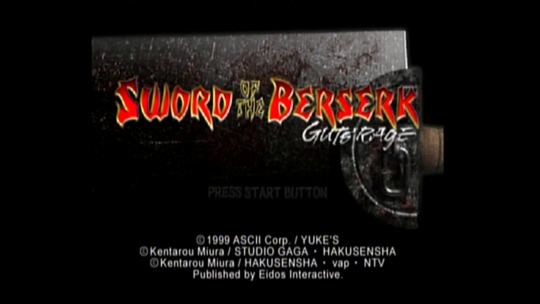
Some things just demand to be adapted into video games, and Kentaro Miura’s dark fantasy manga series Berserk stands pretty much atop that list. Released in 1999 and developed by Yuke’s in cooperation with Miura, Sword of the Berserk: Guts’ Rage is a third-person action game for the Sega Dreamcast that attempted to scratch that initial gamification itch, and ride the success following the first anime adaptation of the series, which premiered two years prior.
Before discussing the details, it’s important to note that Sword of the Berserk suffers the same fate that so many licensed games do. It isn’t very good. Some of that comes down to the era in which it was made. There are a few frustrations that plague it that are typical of an era in which 3D action games were relatively new. That isn’t to say there aren’t things to enjoy about the game. If nothing else, it did help solidify why the approach to how action games played needed to be adjusted. Unfortunately, that means Sword of the Berserk itself, is something of a missed opportunity. On the plus side, it’s not a very long game, so its shortcomings don’t have enough time to grossly overstay their welcome, and any suffering along the way is mercifully brief.
The first obvious issue is the lack of camera control. Going back to play any 3rd person action game without a controllable camera can feel extremely limiting. It’s become such a staple that it feels more unnatural not to have it than it probably did to have it when it was first introduced. Of course, there are certainly examples of very good games that lack it. You can’t control the camera in Onimusha or Devil May Cry, but you don’t tend to notice that limitation as much since the camera is placed in thought ways that reveal the relevant visual information to the player.
Sword of the Berserk’s camera lacks that thoughtfulness. It tries to be dynamic, moving along with your character, but the concern seems to be more on framing Guts in a particular way rather than assisting the player. Given that this is an adaptation of a beautifully drawn manga series, it’s hard to fault the developers for trying to capture some of that magic in their game (which they largely accomplish in the cutscenes), however, it ends up compromising its playability to a fairly extreme degree at times.
You also have the issue of moving toward the camera a lot, meaning you’ll often find yourself running headfirst into danger you can’t see until it’s too late. There’s even an escape sequence near the end of the game reminiscent of Sonic Adventure 2’s opening sequence. You have to run around and jump over obstacles with little warning before you’re right up against them. Without rings to help you cling to life, this is extremely frustrating. One mistake means you die, and in a game with limited checkpoints and continues, it can quickly become the hardest and most frustrating part of the entire experience.
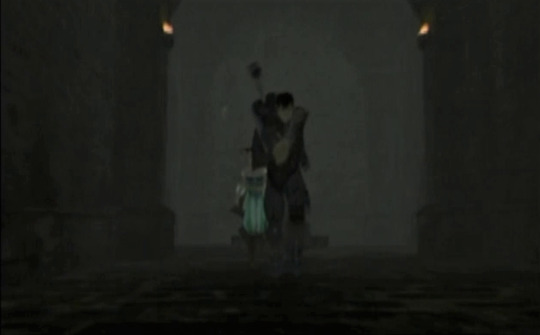
Rollin' around at the speed of sound/Got places to go, gotta follow my rainbow/Can't stick around, have to keep movin' on/Guess what lies ahead, only one way to find out!
Another part of what makes the camera so difficult is that it doesn’t have a lot of room to maneuver, even if the developers might have wanted to. You spend most of your time inside a castle, fighting through narrow corridors and cramped courtyards. In those confined spaces, the camera can’t really move wherever it wants because chances are, level geometry would get in the way. There are few examples of where this does actually happen, such as when you travel below the castle’s cemetery, and an obelisk sitting in the middle of the room complete obscures any figures that move behind it.
Aside from restricting the camera, the level design has the consequence of hampering what the game’s mechanics are centered around entirely, the combat. The whole point of a Berserk game is to play as Guts and swing the laughably huge Dragon Slayer sword around. There are several levels in this game where that is literally impossible. One level in particular, where you run through the castle town has several passageways where you’ll clank your sword against stone trying to land a hit on guards that hinder your progress. The developers seemed to realize this would be a problem, so they put in the option to sheath the Dragon Slayer and fight with your fists. I can say that this is not the most adequate solution. Even playing on the easy difficulty, punching guards out is a dubious proposition. Your damage output is drastically reduced and since the guards can snipe you with arrows from some distance with crossbows, you may well die before even getting the chance.
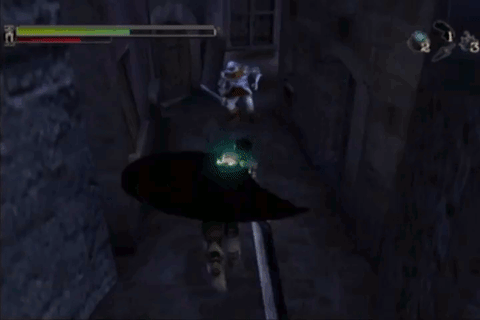
Let me just, uh, erm, hmm.
On some level, you have to respect the commitment to realism, as you obviously could not swing a sword the size of the Dragon Slayer in most places that human being typically occupy. However, the ability to swing said hunk of iron in the first place is fantastical, and thus, I think it would have been more than a fair compromise to let the sword simply clip through level geometry in an effort to make the combat more fluid and satisfying. Thankfully, the boss fights, which are the main draw of the game’s combat, are usually placed in much more open areas to avoid this issue.
Ultimately, I get the feeling that the game’s design took something of a back seat to the story that Kentaro Miura wanted to tell, and as such, there’s relatively little actual game to be played at all. Of the roughly four hours it takes to get through, most of that time is spent in cutscenes, making Sword of the Berserk more of an animated film than a game. Honestly, this does not really bother me. If you got the game because you were already a fan of Berserk, then what you’re getting is Berserk. What’s especially great about it is that the story told is unique to the game. It’s a side-quest, as it were, to the Millennium Falcon arc, where Guts has decided to keep the traumatized Casca close to him as he continues his quest to defeat Griffith. In this side story, Guts meets some traveling performers and decides to go watch their performance in a nearby town. He ends up walking into the middle of a conflict between the regions lord and people afflicted with a curse, called the Mandragora.
What’s more, is that the story is told quite well. For its time, the Dreamcast was a very capable platform for 3D graphics. Even twenty years later, the cutscenes are enjoyable to watch on their own if you’re willing to overlook a few flaws. Sure, the characters models are a bit blocky and they move a bit like action figures, but robotic movement is a problem that still plagues 3D animation if the 2016 Berserk or 2019 Ultraman anime is anything to go by. There’s still incredible attention to detail. The faces, in particular, have a lot of expression to them and help bring moments to life in a way that seems hard to believe at times.

You can really see the despair on his face.
It helps, too, that the voice acting is of very high quality. With well-known talents like Cam Clarke and Earl Boen, there was a clear emphasis on treating the game’s story seriously. This is extremely important since the story makes up pretty much the whole reason you’d be playing this game in the first place. There are some issues with the localization here and there (the name Guts is treated as a nickname rather than a given name in a few scenes), but the line delivery and interaction between characters really sell the scenes, even if the lines themselves are a bit clunky or cliched. When you compare the cutscenes in Sword of the Berserk to those in say, Tenchu: Stealth Assassins, released just a year earlier, you can’t help but appreciate the skill in direction and experience of the actors when stellar voice-acting in games was not a given.
You could argue that this story could have been served better through manga or traditional animation, but it’s hard to fault Yuke’s for wanting to make a Berserk game, or Miura for wanting to branch out and test the waters on new methods of conveying his story. Berserk’s popularity in Japan meant that a game based on the series was going to be made at some point, and creating a self-contained side story that can be begun and ended within that game makes perfect sense. It also helps make the game approachable by those who aren’t familiar with the series at all. In 1999, Berserk certainly wasn’t considered such a pinnacle of dark fantasy in the West as it is today, so someone picking the game off the shelf in the US would very likely have no frame of reference for the story at all. Thanks to the introduction of new characters like Rita, the player can learn what they need to know through the lens of those characters, making the reliance on that prior knowledge a lot less necessary.
Now that Berserk’s influence has become so far reaching, it seems unlikely that anyone would come to the Dreamcast game without some working knowledge of the series. While it’s hard to consider it a can’t miss part of the Berserk experience (save for the wonderful musical contributions of Susumu Hirasawa), there’s enough there for anyone willing to put up with some clunky design. At the very least, it’s worth watching a playthrough online for the story alone if the act of playing the game itself doesn’t manage to replicate the feeling of becoming the Black Swordsman himself.
4 notes
·
View notes
Text
Interview with d Marie Licea
Recently, I had a chance to talk with d Marie Licea, developer of Us Lovely Corpses, about the creative process behind this fascinating “surreal-horror-romance” visual novel. Us Lovely Corpses is a VN I considered reviewing for this blog when I read it, but I struggled to write a review that would be interesting and accessible—explaining the parts that most impressed and resonated with me would mean spoiling it completely. But I encourage anyone who can handle some disturbing content in service of a great story and heartfelt message to try it out. This interview will start with some more general questions, and it includes a warning farther down before any spoilers for Us Lovely Corpses appear.

Question: Did you always plan for the story of Us Lovely Corpses to be a visual novel, or did you consider other mediums as well?
Answer: In its earliest stages, Us Lovely Corpses was actually planned as a comic! I came up with the original idea somewhere around 2014-2015—it was going to be about 10 pages, and would just cover the scene that ended up being the game's finale. Alex and Marisol (who weren't named yet) were very different—they were much younger, Alex wasn't really "a witch," and Marisol was originally a boy!
I sat on the idea a while, and the longer I did so the more I wanted to explore the history of these characters, which made for a longer and more unwieldy comic. Then in 2015, when I started learning about visual novels, it hit me that the concept could work really well in that format, especially when the "exploration" element came in.
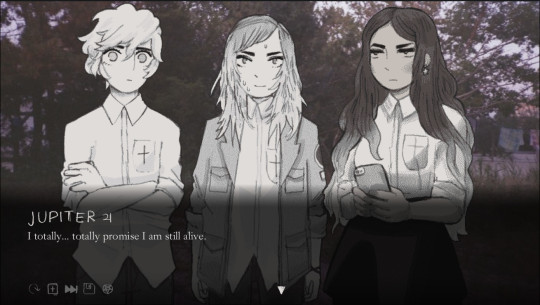
Q: Were there any particular visual novels that influenced you?
A: Yes! The reason why I started getting into visual novels specifically in 2015 was that because that was the year We Know The Devil came out!
We Know The Devil totally shifted my viewpoint as to what a visual novel could be—no diss to dating sims, but before WKTD, I, like most people, just saw VNs as dating sims and occasionally something like the When They Cry series.
WKTD totally changed that for me—a short, incredibly contained story that also managed to be about so, so much, in a surreal, horror-inspired atmosphere . . . it really blew me away! Not only was it the game that got me into visual novels, but you can definitely see a lot of its influence on Us Lovely Corpses.
Besides WKTD, there was also Her Tears Were My Light, a fairly minimalist love story that used the "rewind" function in Ren’Py as part of the story. Utilizing mechanics as part of the narrative was a really cool idea to me that also ended up in ULC. (side note: I met and hired Alex Huang to do the music for Us Lovely Corpses because I loved the soundtrack for HTWML so much!)
Finally, I was really into the original Gyakuten Saiban (Ace Attorney) trilogy when I was younger, and the evidence gathering segments were a big part of those games. I originally envisioned the "rose clipping" segments of ULC like those parts, where you'd have to select each rose before cutting it, but sadly that was a little too complex for me at the time, and I eventually decided to go for something more simple in order to complete the game. But that initial idea was a big part of what made me try Us Lovely Corpses as a game, so it ended up still being a big influence in the end!
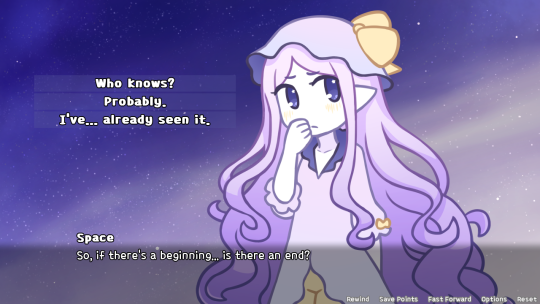
Q: Besides technical things like those mechanics and the exploration element, do you find that you have a different style of writing in visual novels as opposed to the stories you've done in other formats, like twine and comics?
A: I'm not sure if this is always the case for visual novels, but I find I have to format my writing differently when writing for VNs—specifically, in length of sentences and paragraphs. I've found my writing worked a lot better in Us Lovely Corpses the more I broke everything up into smaller fragments—larger ones or paragraphs didn't work as well, which can be a problem for me because my writing can tend to get a bit wordy!
This has to do a lot with the pacing of visual novels and how the player/reader is a big part of that. Control over pacing is a big part of why visual novels appeal to me, but you also have to think differently to get the best result.
Technical stuff aside, I found that, at least for ULC, my actual writing style remained pretty much the same. I think this has the benefit of making the writing in Us Lovely Corpses seem unique, but has the disadvantage of posing a problem for a certain something I didn't see coming at all: Let’s Players!
A few people have made videos of their playthroughs of Us Lovely Corpses, which is incredibly exciting, but when I watch them, I can't help but feel bad for them because they always read everything out loud . . . which means, with my somewhat wordy style, they have to do a LOT of talking!
I haven't actually gotten complaints about this or anything, but I still hope people who make videos of their playthroughs of ULC keep some water nearby!
Note: the next part of the interview contains spoilers for Us Lovely Corpses, as well as discussion of mental illness.

Q: As the story progresses, it becomes explicitly clear that the “monster” is Marisol’s bipolar disorder. Did you ever think about leaving the metaphor more ambiguous, and if so, what made you decide to be so direct instead?
A: I'd say if the "monster" was one specific thing, it would her Ocular Rosaceae, as it's the one specific thing that gives a physical form to Marisol's thoughts and unhealthy behaviors. But even that, in a way, is not taking into account her bipolar disorder and depression, her jealousy towards Alex, her self-loathing and introversion . . . "the monster" is all of those things, because at its core, the monster is mental illness. And mental illness is never just one thing, but many things and factors interacting at once to create something much bigger than a single diagnosis.
All that said, it's not incorrect to say that Marisol's bipolar disorder is the monster; it's just more accurate to say it’s part of Marisol's monster. Back when ULC was still a comic, I wasn't going to talk about specific diagnoses, but as the story grew I realized I wanted to talk more explicitly about mental illness. I don't exactly remember where the idea came about, but early on in the writing process I got that idea in my head of Alex finding that fake corpse and finding that doctor's diagnosis. In retrospect, it was a really, really weird scene, especially as it comes right off the heels of realizing what you thought was a dead body was just a weird joke, but I do like what it represents—in the middle of this surreal trip into a house filled with talking flowers, the story suddenly halts as you soak in this very blunt reminder that, magic aside, this is a world that is representative of the real world. Marisol may have a magical disease and be best friends with a witch, but she's a very real girl, so to speak.
So that harsh reminder is part of why I wanted to be so direct. I guess the other part would be that I just wanted to make no bones about it. Some things you want to leave up to interpretation, and some things you don't. From the very, very beginning the story was always about mental illness, so it just felt right to me to be upfront about it.
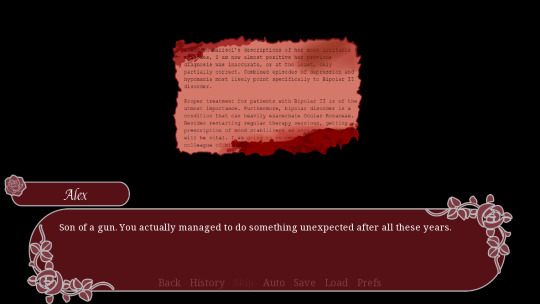
Q: One thing I noticed that I thought showed a lot of attention to detail in ULC was that in one of the rooms you explore there are two famous paintings that both have connections to suicide (Millais’s Ophelia and van Gogh’s Wheatfield with Crows). Are there any other little symbolic details like that you added to the story that some readers might have missed?
A: Ah, I'm glad you caught that! If I had stuck with the more Ace Attorney style of gameplay I would have liked to put more small details like that in. As it stands, the big example is probably pretty obvious—Alex's notes about each rose are fairly close to the standard "flower language" of different rose colors in real life. The fact that yellow roses can mean "jealousy" or "friendship" depending on what source you use actually ended up working very well with the story.
The last names of Alex and Marisol are probably pretty obvious: de Rosa ("of the Rose") and Flores ("Flowers"). Something that's probably less apparent is Marisol, a name that originally comes from a contraction of "Maria de La Soledad" ("Our Lady Of Solitude"), one of the titles given to the Virgin Mary.
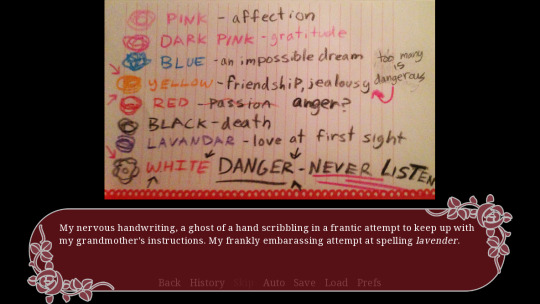
Q: Was the flower language the reason you used roses rather than any other flower, or were there other inspirations for that as well?
A: There were a number of reasons! One being that Revolutionary Girl Utena was a big influence on my style and particularly on several parts of the game. There's also the whole dichotomy with roses/thorns. And there's also the simple fact that I have fun drawing roses!
Q: For my last question, are you working on any other visual novels right now?
A: I am as a matter of fact! I'm working on a visual novel set in Japan about some high school kids who explore a strange house. It's still in fairly early stages, but I think if I give it my all I will actually have a demo ready in time for Halloween, which would be great!
I’m definitely looking forward to seeing that demo—even more so after learning about all of the serious thought d Marie Licea puts into the details and themes of her work. If you’re as excited as I am about updates on her upcoming projects, you can follow her on itch.io or twitter, and considering supporting her patreon. Thanks for reading!
72 notes
·
View notes
Text
Shin Megami Tensei 3 Nocturne is still incredible
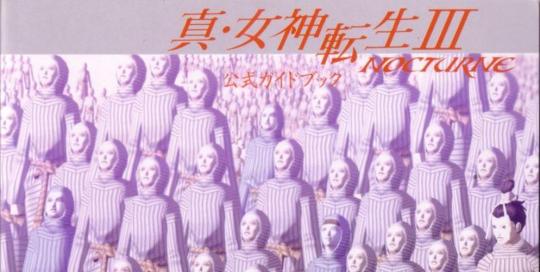
I just finished a replay of Shin Megami Tensei 3 for the first time in a decade, so I felt compelled to write a big long unstructured essay about it where I’m going to sound like an overwrought crazy person. That’s okay though. There’s just something about this game that really speaks to those of us who find our way in. When you sound like a hyperbolic cultist writing soaring prose to try to meet the game at its level, it’s not a unique reaction. We’ve all been spellbound in the same way, the game is designed to do it. How is it designed to do this? Basically, in every conceivable way! The music and sound composition, the moment-to-moment battling, the environmental art and location choices, the progression systems for both the protagonist and demon fusions, the scope and method of storytelling, the density and depth of the mythological references, everything fits together like a symphony to inspire these feelings. Tension, immersion (lol), and utter absorption. Nocturne is a clinic in how to structure every aspect of your game around a unified vision (finding the strength to survive in a cruel and barren land) without hugely compromising ambition. That this level of design can be sustained over the course of 50 hours for the average playthrough and 70 for those of us determined to reach the lowest depths of the game’s enormous optional (!) Amala dungeon is insanely remarkable. Some of the more adolescent fans of the Shin Megami Tensei series and the broader Megaten franchise lionize this one in particular as being the most “dark” but that’s a kind of stupid and narrow way of looking at it. If you’re a cool person you don’t love Nocturne because it’s “dark” you love it because the game makes you feel like you’re hallucinating. SMT3 is unconcerned with providing detailed exposition and light-hearted character moments, but it’s a game that is overrun with “story” at every turn. And not just in the environmental, piece-it-together Souls series storytelling sense people love to talk about, there are actually a bunch more NPCs around straight up delivering dialogue for you than you’d think! Pair that up with the demon chatting, the compendium entries, the audiovisual cues and the gorgeously directed cutscenes, and the common complaint that SMT3 has no story just seems like nonsense to me. The game isn’t necessarily just dour or unambiguously somber either. Megami Tensei’s roots are in the pulpy trash of 80s light novels, and you see this in some of the humorous demon-focused crassness, the bits of comedic negotiation dialogue, and the seeming mish-mash of myth as aesthetic influences. But the funny paradox of SMT3 is that it’s a game built on a punk-rock foundation of rebelling against what’s proper and mainstream (see any interview with the creators) that is also simultaneously downright austere by today’s standards. Grand and lonely and visionary in tone, careful, measured and meticulous in its design, without an ounce of bloat, nothing wasted or incoherent, it’s just so impressive on every level (I promise I’ll get more specific with my gushing soon). There’s an attitude among some Megaten fans that Nocturne is the one that doesn’t fit in the series, that it’s too different from previous Shin Megami Tensei games, but I don’t think that’s right. To me there’s a very clear throughline, it’s just Nocturne’s antecedents aren’t necessarily found in its immediate numbered predecessor. When it comes to the main and numbered games in this series, you can very easily see the path from Megami Tensei 2 -> Shin Megami Tensei 2 -> Shin Megami Tensei 4, all of which begin years after the apocalypse has occurred and concern themselves with how society persists and political factions collide decades and even centuries into the aftermath. They are the three most readily described as “cyberpunk”, they’re chattier, they’re a bit more clichéd in their own ways (amnesiac gladiator and military academy recruit openings for SMT2 and SMT4 respectively), they let you use guns and their general sensibilities are similar.
SMT3’s lineage is, I feel, more directly traced from two other games. SMT1 and (hear me out!) Revelations: Persona. I think it’s easy to link these three games together for several reasons. In all three you begin in relative peace in a current day city, in all three the inciting incident is an occultist ritual, and interestingly in all three the hospital is your first dungeon, deliberately chosen for its uncanny familiarity to create an immediate sense of unease (and also the pretty obvious birth/death location symbolism). These are games centered around the immediacy of disaster and apocalypse, and take modern day locations that are meant to be familiar and subvert them to make them unnerving. Atmosphere is a word I see frequently used to praise all three games (yes there are at least 1 dozens of us, [dozens!] who like Persona 1) and the dream-like, surreal atmosphere in these three games can be strikingly similar.
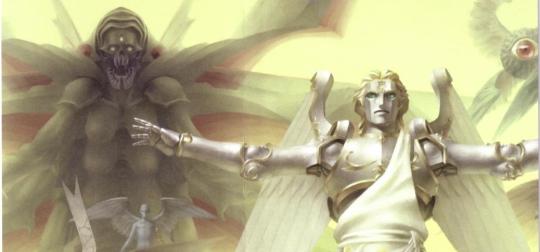
So yeah, good lord, Nocturne’s atmosphere. This game is simply filled with astonishing imagery at every point. The art directors managed to make each scene feel somehow weighty and mesmerizing, with aesthetic choices made throughout that are just so thoughtful and cultured. Angels and demons look terrifying and awesome, in that they inspire terror and awe. Gods and goddesses appear benevolent, their facial expressions neutral and lacking in human emotion. Jack Frost remains the best mascot in videogames. There’s well-researched details in the animations and all aspects of appearance (see here for a bit on Baphomet’s posing). The vocal and sonic choices are perfect, like that unsettling blaring soundblast when the statue of Gozu-Tennoh speaks, as if a great and mighty terror is deigning to communicate across worlds.
There are posts that dissect the spiral imagery of the vortex world that repeats over the course of the game. There are entire sites devoted to breaking down the wide range of inspirations for the game's transcendental demon design. Random tumblr people compare the cutscene direction to Ingmar Bergman films, and it’s interesting to see how the cutscenes are frequently in first person or otherwise hide the protagonist, which not only hearkens back to series roots (while saving budget $$$) but also conveys solitude and makes the scenes with multiple demons and figures appear that much more spectacular. On any given day you’ll find a tweet or two or three of people overwhelmed by the game’s aesthetic choices, its virtuoso game over sequence, or title sequence, or pretty much any sequence. It’s the purest expression of a world class artist’s singular vision and is the reason why all of us sound so annoying whining for Kazuma Kaneko to return from his flower field exile.
There’s also a very ingenious way SMT3 supports its themes and that is through the combat. Nocturne is a game about stealing turns. It’s the fundamental principle of the battling, it’s why everyone tells you to keep the skill Fog Breath, and it’s a carryover from the simpler system in SMT1 where the method of stealing turns was using charm bullets or casting Zio to paralyze the enemy before they even have a chance to act. The battle system has a famous Engrish name called “Press Turn,” which is distinct and not to be confused with the One More system from newer Persona games or the alignment based combat bonuses of Strange Journey.
In SMT3, any given press turn encounter depends upon the party composition choices you’ve made, not only the resistances and repels/drains you enter with (two very different things in terms of battle consequences!) but also the moment to moment decision-making of turn management, weighing how to strategically pass to maximize damage output over the course of the fight. Every battle is an opportunity to demonstrate your efficiency and mastery of the systems, and the goal of each encounter is to use foresight and preparation to demolish your foes before they have the chance to even act. Steal turns and survive in a barren land of death upon death, this is the elegance of Press Turn. You’ll hear endless discussion around this game’s difficulty, and encounters generally have teeth to them yeah, but there is a very principled fairness to the battling where combat swings do not occur as dramatically as they do in say, SMT4. SMT3 is balanced perfectly by virtue of its lack of save anywhere option, providing you with tension at all times but also most importantly the tools to mitigate disaster over the long term, which is a deeply deeply rewarding way to survive.
Press Turn’s UI really adds to this rewarding feeling. How terrifying is it when a boss casts Beast or Dragon Eye, and suddenly a string of new turn icons appear? How satisfying is it to see a row of flashing turns, knowing that you’ve fully exploited your enemy? The enemy composition really accentuates this as well, with encounters often designed to avoid easy spam of single elements or physical skills to mindlessly coast to victory. SMT3 doesn’t want you taking any shortcuts, if you want to take advantage of a given demon or magatama’s skillset, you need to pair your choices to mitigate the corresponding weakness, or the enemy’s AI will press their advantage in the exact way you would. It’s a really satisfying symmetry.
There are also other paths to battle that are just as viable. Exploiting weaknesses with a multipurpose magic build is another way to steal turns. Building battlers around skills that maximize critical hits is another way. And if you are terrified of the infamous one-shot deaths that people like to say are the franchise trademark? Equip null-death magatama in between level ups. Raise your luck. Resolve battles before enemies even have the chance to use the spell against you. Raise your speed so enemies don’t get the chance to go first. Get endure as soon as possible. The tools for success are all right there for you! Nocturne tasks you with growing strong enough in this world to ascend to creation, and it provides you with multiple paths to reach this goal.
So, about these multiple paths, let me talk to you a bit about SMT3’s famously unique alignment system. Other games are lauded for their ultimately fairly stupid morality systems but Nocturne breezily operates on a completely different level. Instead of RESCUE and HARVEST in dumb giant gothic font or literally color-coded paragon and renegade meters, in SMT3 you align yourself naturally through story progression with factions concerned with stillness, power, solitude, freedom, or rebellion. Instead of the grand binary moral choice being telegraphed through hideous-looking “Little Sisters” (god I hated that stupid name haha) there’s a rough analogue in the actually sympathetic but far more complex unsettling-looking Manikins, whose character motif is described by the creators as representing those who lose themselves to the strength of numbers. There’s unfortunately a tiny amount of material in the game to support extremely tedious “canon” discussion, but the game actually works best and most purely as an abstract, impressionistic vision of grand universal themes. Playing through any one of SMT3’s six endings makes the universe feel vast and overwhelming, and asks you to contend with a broader suite of philosophies than ‘good’ or ‘bad,’ and that’s ultimately what I think the developers were most interested in going for.
Something about the prose in Nocturne is also special in a way that is extremely difficult to accurately describe. Like everything else in this game it feels elegant and detached, gods and goddesses are appropriately otherworldly without sounding like haughty stereotypes, lower demons are funny and crass in a way that’s not so on-the-nose. Again it’s very difficult to pinpoint but something has been lost in the writing of the newer games, even a bit as small as how angels and demons in the game actually never name anything directly as God, but instead refer obliquely to a Lord, an Absolute, or a Great Will, Nocturne just gets all the little details right.
As I run out of steam from this braindump, I notice there’s still an essay’s worth of observations in so many other topics that deserve to be discussed. The Tokyo-focused but somehow universal theming of the game’s alignment principles and locale visuals. The insanely expansive but unfortunately compressed soundtrack (see over three hours of unreleased material alone here), where dungeon music regularly evolves to indicate progression, and battle and boss music quantity is generously varied both between and within song. The extremely rewarding fusion system can be plumbed to frankly insane depths, with a demon bestiary that is reasonable to 100%, and the lack of “use it or lose it” demon quality that hits other SMT series games contributing to a better feeling of progression and customization opportunities. The demon negotiation, which rewards your knowledge of mythological connections among pantheons with unique one-time only dialogue. The dungeons, the DUNGEONS. With the exception of an early set of sewers, an apparent shitty dungeon theme RPG tradition, each of these are little masterpieces of aesthetics and design, with their own thoughtfully introduced and iterated gimmick, planned wonderfully for both third and first person, often wrapping in and around themselves in spirals in that very Shin Megami Tensei-specific way.
Even if you think a game like Nocturne seems too dense or impenetrable or boring or random-encounter filled or whatever, it’s worth giving it a real shot for yourself to see if it manages to grab you. We’re no longer in those days in the late 2000s where the game cost exorbitant amounts of money to get, a digital version can be found on PS3 for $10 (with only rare emulation issues in certain dungeon sections), and the disc itself was reprinted and can be found brand new on Amazon if you have a PS2 or want to emulate on PCSX2, where the game looks even more breathtaking. Either way, find a way to treat yourself to an RPG where it is actually appropriate to throw around the term masterpiece. I didn’t really write any of this text no one’s going to read to make a persuasive case to anyone, but sometimes games will inspire you and it feels good to ramble about them. Games like this one are nearly impossible to make nowadays, and SMT3 is something worth cherishing.
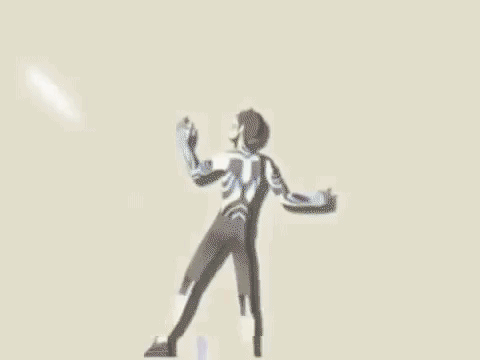
9 notes
·
View notes
Text
Ōkami: Painting a World
Game Name: Ōkami
Publisher Name: Capcom
Year of Release: 2006

Ōkami is a game of immediate interest due to three reasons:
A cel shaded art style reminiscent of sumi-e and Ukiyo-e ink wash paintings
Fluid and fast gameplay and mechanics
The main protagonist is a DOG

Things that make the game Noteworthy:
Of immediate note is the art style that Ōkami uses; cel shading based off Japanese ink wash paintings, sumi-e and ukiyo-e in particular. This paints, no pun intended, the world in such a way that it becomes a mirror of Japanese ink paintings of the same style.
Ōkami is a game that, even more than 10 years later, still holds up with everything. Its artstyle, story and gameplay still hold up even more than 10 years later. The charm that the game exudes, and the way the game’s MDA framework comes together creates a player experience that allows for enjoyment at any time, letting the game not feel like a one created in the early 2000’s.
The game draws inspiration from Japanese history and culture, which also lend to the game’s noteworthiness. Not only does it allow for the art, but also the game world’s rich history to be prevalent. Nippon (The world in which Ōkami takes place) was heavily influenced by Japanese folklore and mythology, with its name even being Japanese for “Japan.” Locations, characters, objects, and even the gods who present you with your brush techniques (more on that later) are all drawn from or inspired by parts of Japanese culture.

My Experience:
Okami was initially slow to start, but quickly picked up in pace once the game was finished dumping all of the lore and backstory on me. The text and text boxes in Okami take so long to progress, and Issun, your companion, refuses to stop talking, breaking up the game’s flow. But once I was able to get into the actual meat of the game, exploring the world and fighting off monsters, the experience greatly improved. The sections in which I was simply running from one location to the next were magical. Movement is free, combat is quick, and the characters and world are so full of charming personality that the long time spent exploring is worth it, simply to experience more of the game’s world.
Audience Response:
Okami was an instant hit with audiences. The captivating art style and charming story drew people in and it won both NAVGTR and IGN’s Game of the Year award in 2006. But despite all of this, the game was met with a poor commercial reception. It sold around 200,000 copies in the US, which is an incredibly low amount for a game of its scope. To fans, the game was a masterpiece, which warranted ports of the game to various consoles. But upon its initial release, it was lackluster in terms of its sales.

Core Loop:
The game’s main loop focuses heavily on the player’s exploration of the world, and the events that break it up, such as entering combat or watching a cutscene.

Main Mechanics:
Ōkami takes place on a large overworld, Nippon. They have free reign to explore the areas available to them, entering different parts of a scrolling landscape, including rolling fields, dark caves, and small towns and villages populated with a colourful cast of characters. While traversing, the player can press the attack button to enter a dash. This dash allows them to move faster, and thus explore more of the world quicker.
While traversing the overworld, the player may run through a Devil Gate or into a Demon scroll. When they do, they are engaged in combat. During combat, the player is locked to a small area, and they must defeat all of the enemies they encounter in order to end the combat.
While in combat, the player has access to a slightly different set of abilities from the overworld. The dash button is instead replaced by the primary attack button, and they gain usage of the secondary attack button. Usage of these allows for Amaterasu to utilise her Divine Instruments. The main attack button uses whatever divine instrument is currently equipped as Amaterasu’s primary weapon, and the secondary attack button is for the Sub Weapon. The player is free to choose what weapons they equip to best suit their playstyles.

Keeping with the ink-based art style, Amaterasu is armed with the Celestial Brush, a magical brush that can use ink for a variety of effects, ranging from helping plants bloom to causing water to spout up in a geyser. As the player progresses, they unlock more of the thirteen techniques, which can be used to solve puzzles, traverse the land, or assist in combat.
The player is, however, limited in their usage of the brush. The player has an inkwell that is drawn from in order to utilise the Celestial Brush. When the player runs out of ink, their abilities are severely reduced. Not only can they not use any of their brush techniques, but they also cannot use their primary/secondary attack, and they cannot dash in the overworld. Ink recharges over time, or the player can pick up an ink well to restore some.

Game’s Influence:
Since Ōkami’s release, very few, if any games, have attempted to recreate its art style. Though its style of exploration and worldbuilding has been used in previous games, as is tantamount to games of the same genre, its unique art style and combat mechanics are few and far between. While it did receive a sequel, there are no noteworthy games that have attempted to recreate
Community Development:
The game has since had multiple remasters, and Amaterasu has become a staple Capcom Character. The general populace considers the game, its art style, and its themes to be timeless in a sea of ever expanding media. It has a moderated Fandom wiki, and fanart of the game and its characters/world always appears whenever the game is brought back into the spotlight, whether it be a YouTube feature or a new release.
Overall, Ōkami was a success to those who enjoyed it upon its release and ever since. The game is both interesting unique in its style and world, but is familiar enough in its mechanics that anyone could pick it up and play it. If you ever have the chance, Ōkami is well worth a playthrough.

Sources:
Okami Fandom Wiki:
https://okami.fandom.com/wiki/%C5%8Ckami
Okami HD Website:
http://www.okami-game.com/
Giantbomb:
https://www.giantbomb.com/okami/3030-20555/
My Personal Experience with the game
All images taken from Google Image search results
1 note
·
View note
Photo

i couldnt shut up about enderal right now if i wanted to so here’s that prophet ask meme with my prophetess fleur
blank
1. The basics – name, age, etc…
her name is fleur! i don’t know her last name but that’s okay because she’s kind of abandoned it. both of my vyn protags have line-of-sight, musically-inspired names so after that fuckin nightmare intro scene i had to name her as an homage to the song that was playing in my head the entire time it was happening (warning: disturbing imagery, abuse of some sort that is not shown but is strongly implied)
she’s 26 years old, half-kilean and bisexual.
2. Describe their appearance.
there’s a picture up there but a few other specifics: her hair is actually white, not just very light blonde, and she has blue eyes
3. How do they like to dress?
she jumps at the chance to wear nice clothes. she never got to back in ostian.
4. Do they have any markings (scars, tattoos, birthmarks)?
she has a few scars from a couple scuffles she got into back in nehrim. one of then is pretty gnarly-looking but it’s a diagonal from her lower chest to her left hip so once the events of enderal started rolling nobody who had seen it was still alive. word to the wise: don’t try to 1v1 a thunder lizard when you’re 14.
5. What are they like? Describe their personality (use whatever tools you like- MBTI, D&D alignment, astrological signs, Hogwarts house, words/phrases):
first of all, the only one of those tools that i have even a remotely decent grasp on is d&d alignment. she’s neutral-bordering-on-chaotic good. i don’t make characters with messages behind them (esp if they’re not for anyone’s consumption but mine) but hers would be “optimism with a dose of realism is probably the healthiest way to see the world”--she has the good sense to know when a situation or a person is beyond help but until that point she will try everything to help them. she desperately wanted to be wrong about adila and even as he was preparing his kamikaze attack she tried so hard to talk yuslan down.
to temper this, though, she takes things too seriously and she’s a bit of a crybaby (ok, not just a bit. alessia, my shadowgod, cried three times over the course of the entire main quest. fleur cried three times over the course of the very first quest that didn’t take place inside a trauma nightmare), although you could argue that she just has like. a normal human reaction to trauma, and everything that happens to her in enderal is EXTREMELY FUCKING TRAUMATIC.
since i have an easier time using tools like the ones described in the question to describe personalities, if she was a disney character she’d be rapunzel from tangled but less naive and with meaningful agency and if she was a social link/confidant in a persona game her card would be the star.
6. How would they describe themselves?
she has really low self-esteem but she doesn’t like. outright hate herself so she’s dismissive of any notion that she’s special or pretty. this probably sounds extremely sue-ish but a) i don’t give a fuck and b) every diy protagonist is at least kind of a mary sue simply because they’re the big special chosen one who all the romanceable companions have feelings for.
7. Education level?
uh. Not Any, Formally Speaking. School Of Hard Knocks. Worked For A Historian In Her Late Teens-Early Twenties And Learned Most Of What She Knows That Isn’t On The School Of Hard Knocks Curriculum That Way.
8. What are they proud of in themselves? What are they embarrassed about?
like the one notable talent that she’ll accept having is that she’s really smart and even before the Everything That Happened On The Ship Headed To Enderal she was a really quick learner.
she has ZERO prior experience with romance (she’s not in any way aromantic, she’s just never been in a romantic relationship) and she doesn’t like to tell people that, especially people she likes. she feels like they’ll think there’s something seriously wrong with her and that’s why she’s never been in a romantic relationship at age 26. 9. Do they know any languages other than Inal?
she knows like. kindergarten-level kilean.
10. What, if any, aspects of their mother’s culture influenced them growing up?
she didn’t really “grow up” with her parents, they died when she was six, but she has a strong belief in the importance of diplomacy and that’s pure Mom right there.
11. Name a song (or a few) that remind you of them.
i hope you like obscure musicals and vocaloid because that’s what you’re getting
In All My Dreams I Drown - The Devil’s Carnival Cast
Starchild - Ghost Quartet
Tears To Shed - Corpse Bride
Ever Lasting Night - Hitoshizuku-P (specifically the Miku character)
Lemonade - Sophie (sorry 4 mood whiplash)
12. Speaking of songs, can they sing? What is their voice like? How about instruments?
she’s hopeless with instruments but she’s not a bad singer by any means. sorry 4 relentless youtube links but she kind of sounds like Gelsey Bell
13. What was their life like before coming to Enderal?
it wasn’t good, i’m not going to lie. she and sirius spent a pretty decent amount of time roughing it because towns and cities kind of got progressively more dangerous as time went on, and Because Of Reasons I Won’t Go Into Here they both had pretty good reasons to avoid anyone affiliated with the temple of the creator
14. How did they decide to leave Nehrim?
it was too fuckin dangerous to try to make a life there anymore
15. Describe their relationship with Sirius.
they were siblings in all senses but blood. he got her out of a pretty bad situation when they were kids and she just stuck with him until they had been through so much together there was no other way for them to describe their relationship than “family”
16. Who do they blame for what happened to their family?
herself. survivor’s guilt is a hell of a drug and it doesn’t help that things only got worse afterward. she like. knows the temple did it, but since she doesn’t know why she’ll always wonder if there was something she could have done to stop it.
17. Apart from stowing away, have they ever broken the law?
she would be considered an accomplice to murder because she helped hide a body once (don’t worry, the victim without question deserved it)
18. How honest are they? Under what circumstances would they lie?
basically the only person she directly lies to is herself; if she’s dishonest, it’s usually by omission. the rare occasions she does outright lie it’s usually to protect someone or because there’s no way anyone would believe the truth.
19. Worst memory(s)? Best memory(s)?
Too Heavy For This Post and uhhhh. getting to spend time with her two BFFs/crushes on the Gertrude before everything started really going to shit was an extremely good memory for her.
20. Fight, or flight?
fight unless they’re like. demonstrably stronger. running away from an enemy she had a chance of defeating has always just come back to bite her. she wanted to fight the steel bird in the star city.
21. Describe their combat style.
Best Defense Is A Good Offense, Also Axes = Good. (original playthrough was greataxes and heavy armor but i’ll probably switch to war axes and light armor [or unarmored if i can swing it] when the steam release drops because apparently half-kileans are equivalent to bretons in normal skyrim terms and i can’t abide having played a heavy armor + two-handed breton twice)
22. Have they ever killed before? What is their reaction to combat?
she’s hunted animals but she’d never done more to a human than injure them enough to scare them off prior to enderal. she tries to only harm people in self-defense and may have cried a little bit (ok, quite a bit) after she had to kill firespark.
23. How do they react to having magical abilities? Do they use them?
magic makes her head feel “gross” somehow (read: she’s uniquely sensitive to arcane fever) so she doesn’t use it
24. What do they think of Enderal?
the scenery’s beautiful but the fact that it’s a theocracy and the notion of being stuck on a certain “path” depending on the circumstances of your birth freaks her out for reasons of “hey remember the oppressive religious regime that was responsible for all of your childhood trauma and continued to make your life hell before a mysterious trans power couple plus their direct superior group of outsiders instigated a rebellion that brought the whole thing down? now it controls the whole continent and everyone thinks it’s Good, Actually”
25. Did they do the Biggest Egg Hunt Ever quest?
she would have if my dumb ass hadn’t completely fuckin spaced it out and forgotten about it until it was too late. next playthrough, i swear.
26. How do they feel about joining the Order? What do they think of Arantheal?
she was not in favor of it (see: opinion of theocracies) and basically clung to the green shirts until she was inducted as a keeper. arantheal makes her uneasy but the threat of looming armageddon does a lot to help her shove that uneasiness to the side.
27. What is their opinion of the gods (or lack thereof)?
she’s not inherently against the gods but she doesn’t like organized religion
28. Wine, or pipe?
wine!
29. Do they spare or arrest Hallys, the farmer-turned-bandit in the quest, Deus Ex Machina? Why?
she arrested him after she found out where the money really came from. if it hadn’t been Stolen From A Fucking Food Bank she probably would have let him go.
30. What are their feelings and opinions about the Undercity?
uh...she hates that ark has a “slum district out of sight of the Good And Honorable Rich People” because having been poor and homeless basically until she came to enderal she can’t help but empathize with the residents of the undercity.
31. How do they react to the beggars of Ark?
if tumblr doesn’t stop refreshing the page and deleting my answers every time i switch tabs to look at the wiki or change the song i’m listening to i’m going to throw my laptop off the porch.
she usually reacts by sparing some change because she can relate
32. Where and how do they spend their time when in Ark?
she really likes the museum in the south quarter. she likes learning stuff and looking at relics of the past.
33. What would they do with three wishes?
just...stop the fuckin cycle
make the black stones inert so nobody else gets hurt because of them
this is basically deliberate repression so it’s 100% unhealthy but she would gladly wish to forget everything that happened before she was seven if it would put an end to the nightmares
34. How do they feel about death? Do they fear it?
uh. yes. she very bigly fears death. she kind of had a complete breakdown after the keeper exam until calia reassured her that just because she heard something during her harrowing doesn’t mean it’s true.
35. What (else) do they fear?
deep water (predates game events). also i dont know if it’s necessarily a fear but she hates being surprised.
36. Do they have any secrets?
uh. Yeah. her dad really was as bad as the dreams show. a few other things.
37. How is their behavior around people they like? People they dislike?
she’s about as friendly and affectionate as her shyness will allow with people she likes. it takes a LOT for her to be actively hostile but she’ll only attempt like. the barest superficial politeness to people she dislikes. 38. What is their relationship with the companions? Who, if anyone, did your prophet romance?
they’re her very good friends who she is also crushing on hard. yeah, both of em. she ended up with jespar kind of by default because i wasn’t making an effort to specifically target either of them but i kind of like the contrast between them so i’m gonna leave that in the Canon Playthrough Bin.
39. Was there any non-companion character that they were close to? That they particularly disliked?
does ryneus count? she would have taken him back to the sun temple and had the few green shirts left alive help her build some method of locomotion for him if she could have. also she had a crush on lishari. she didn’t have anyone she strongly disliked other than obvious shitbirds like taranor.
40. How do they feel about myrads?
she thinks they’re Big Cute Dog Monster Boys
41. What dreams or ambitions did they have before coming to Enderal? What about afterwards?
she wanted to be an archaeologist! she kind of got to do archaeologist stuff during her time in enderal but she wishes that she’d been able to do it without an apocalyptic sword of damocles hanging over her
42. Do they like cities? Or do they prefer the country? Is there a region of Enderal that they like or dislike more than the others?
she doesn’t necessarily dislike city life because she often gets lonely so living somewhere with a big population is always a tempting thought, but if she could take everyone she loves and go live somewhere peaceful where there’s no oppressive government or looming apocalypse she would.
her ideal Cottage Away From All The Bad Things would be in the goldenforst but she loves the crystal forest even though if she gets too close to the crystals it makes her feel like her brain is trying to vibrate out of her skull.
43. What do they do to lower their considerable stress?
go on walks in one of the numerous beautiful locations in enderal. take apart inactive mechanical constructs and try to understand their inner workings from their guts. press flowers.
44. Describe their perfect day off.
wake up from a nightmare-free sleep (you said “perfect”), go on a nice walk around the city (paying a visit to the museum of course!), meet up with her friends and find something fun to do that won’t put them in mortal danger, get drunk at the dancing nomad when it gets too dark for wandering around outside the city to be a good idea, and then watch the stars.
45. List three of their favorite things. Three things they hate?
likes:
sugar bread
the color gold
nice scenery
dislikes:
cooked cabbage
mead
bugs
46. What’s in their pockets?
emergency healing potion
herbs for making another emergency healing potion
at least one apple
random flowers that look cool
a ton of those vendor trash crystal coins you find in pyrean ruins. she just thinks they’re neat!
47. Pets? Mounts? Treasured possessions?
she’s never really had a lot she could hold on to and the thought of prizing a short-lived animal or an item that’s easy to lose is frightening.
48. How are their cooking skills?
NOT FUCKIN GOOD
(she can cook meat alright but anything more complex than that? no)
49. Do you consider any particular quest or side quest to be definitive for your prophet? Which one(s) and why?
i bulldozed through the main quest on my first playthrough; i’ll probably be able to answer this question better once the steam release drops and i can replay the game.
50. How forgiving are they? For example, if they were yelled at in a brothel after searching high and low for this little sh*t, how would they react?
first of all, everyone has a different reaction to traumatic experiences and sometimes that reaction isn’t “palatably sad and helpless” so jot that down. that being said, fleur was extremely upset about that because a) she’s also not an “uwu soft helpless cinnamon roll” kind of trauma survivor, b) some of what he said was generally hurtful, and c) that entire mission had already been one big long anxiety attack
but she’s too hyperempathetic to hold a grudge, especially when a) she knows where the person who hurt her was coming from, b) she gets a sincere apology, and c) she is more than a little in love with the person doing the apologizing.
51. What do they think of the Veiled Woman?
uh. mixed feelings. for what it’s worth, her feelings are mixed because they started out negative and then once she actually got to talk to the veiled woman her opinion strongly improved but like...sirius still died right in front of her because of this woman’s actions so they’ll never be fully positive.
52. If they had been a victim of one of the black stones, how would it have affected them? What would they have used its power to accomplish?
[slams huge portfolio of ideas i’ve had about this exact scenario on your desk] well y’see fleur as she is in canon is a brand of yandere that only technically qualifies as such: she won’t kidnap or murder people who reject her advances, but...uh...don’t harm her loved ones and expect mercy.
fleur under the influence of the black stones...well. it’d be very much like this except not Literally Directed Toward A Fucking Relative. esp the “well you found out now all i can hope for from you is to see your face one last time as you kill me” ending. not quite full yuno gasai love-me-or-i’ll-slaughter-you giggling while hacking someone up but. you know. Something Adjacent.
53. What was their reaction to the Black Guardian’s revelations? Do they accept or reject his offer?
she just kind of emotionally shut down. it was a lot to take in, esp for her. she took him up on his offer because by that point she was desperate for everything she’d gone through to mean something.
54. How does their story end?
credits rolled on her sitting on the edge of the star city with jespar. while the credits rolled i was staring into the void thinking about my life. not sure if that’s canon, next playthrough i’m gonna do a hard save before the final decision point and see if catharsis leaves me feeling less empty inside.
55. Do they change over the course of the story? In what ways?
she becomes a lot more confident and sure of herself and even though she never stops being an optimist she learns to stop setting herself on fire to keep others warm.
56. Anything else you’d like to share about them?
she’s so cautiously positive because she was written as a foil to my shadowgod alessia, a textbook nihilist who only got worse after the events of nehrim.
57. Bonus: For you- what are you most excited for in Forgotten Stories?
VEILED WOMAN BACKSTORY
#this took me literally nine hours to finish#tbf one of those hours i was in class#enderal#uh. canon-typical triggering content within.
5 notes
·
View notes
Text
OXENFREE - Strangest Things
I’m a big fan of games with a strong narrative and games that try something new and unique. Oxenfree is both of those things, and I love it for that.

Oxenfree is a story-driven supernatural thriller about a group of teenagers who unwittingly open a ghostly rift on a deserted island. The game was developed by Night School Studios to rave reviews. The quality of its voice acting and dialogue help create a believable and enjoyable dynamic between the characters, combined with an intriguing story and unique dialogue system is what sets this game above other story-driven titles. While it still had moments of tedium (generally everything that wasn’t related to character development or story), overall Oxenfree is a well-crafted experience that immerses you in its story and makes the player make choices that truly do have an impact on how the story plays out (but not in an annoying way). Goes without saying, but SPOILERS AHEAD.

First, I HAVE to talk about the dialogue system. The first time I played the game, the game absolutely floored me with its dialogue system; it was novel, simple and effective and the crowning achievement of the game in my opinion.
(DISCLAIMER: I played the game on the Nintendo Switch, but I assume the button mapping will be similar between consoles)
I’ll explain how it works first. Throughout the game, characters will be talking to Alex, the player character, and each other. At various points in the game, some speech bubbles will appear above your head, in the general directions of up, left and right. Each bubble corresponds to a button on the controller; the upper bubble is for the upper button, left bubble for the left button and so on. When a dialogue option presents itself, players can choose one of the options by pressing the appropriate button, and Alex will speak.
That in and of itself is already great: the button mapping feels natural and intuitive and the response is fluid and doesn’t break the flow of dialogue. But there is so much more to the dialogue than this that really elevates it.
Many of the elements of the dialogue system serve to make the conversations flow smoothly and seem as natural as possible. To start with, something Oxenfree allows the player to do that many games do not is to not say anything. Many games will essentially pause the world when they ask a player a question, giving them infinite time to answer. This is not the case in Oxenfree.
In real life, a lot of times saying nothing is the correct way to go. Oxenfree recognises this, and incorporates that option into its dialogue. Many times throughout the game you are prompted to respond to what has been said, and every time, you can choose to simply not answer them. This is communicated to the player by having the speech bubbles slowly fade away as time passes, telling the player how much time they have to make an input. If the bubbles fade away, Alex will elect not to say anything.

A dialogue system is all well and good, but without good voice acting and written dialogue, it won’t matter how clean and well executed the dialogue system is. Thankfully, Oxenfree has quality voice acting and dialogue in spades.
The voice actors are great. They each have a distinctive voice that encapsulates the characters they are portraying, and the way they talk for the most part sounds completely believable as American teens.
A great way the system ties together with the voice acting and written dialogue is how the game deals with interjecting dialogue. This is also a problem that affects movies from time to time; in real life, people don’t just wait their turn to say their lines. In a group environment, there will be a lot of interjecting while others are talking, speaking over each other, etc. Oxenfree’s dialogue is written in such a way to facilitate this; when you select a speech option, sometimes Alex will interject in the middle of what the current character is saying. When she’s finished, the character will say some lines like “Now, where was I?” and continue with what they were saying. Because of the way the dialogue is written, the conversations in Oxenfree feel like actual conversations, not actors reading off lines.
As much as I love the dialogue system it is not without some flaws. The main problem I encountered was that I was never sure if a dialogue option would make Alex cut into the current character’s dialogue or if she would wait for them to finish before speaking. But, that problem has a simple fix: having the interjecting dialogue speech bubble be jagged to indicate they are going to cut off another character would be an effective and simple way of communicating what kind of dialogue you are choosing.
Another problem I encountered was how the dialogue interacted with interactable objects. As you move around the island, there are various points of interest that Alex can interact with and start talking about. However, you will often encounter these points of interest in the middle of plot-relevant dialogue, and sometimes, interacting with these points of interest would actually cut off the plot-relevant dialogue and it wouldn’t returned. This happened to me early on in my playthrough, which made me fairly paranoid about doing so again while a character was talking, leading to lots of moments where I was simply standing around, waiting for a character to finish talking before interacting with anything.

These days, a game granting player’s choices that influence the world is almost a given. It’s expected from a lot of players that their decisions will have some impact on the game world, and a lot of games play this feature up a LOT, particularly story-driven games.
To me, the most important part about choices in games is that they feel like an organic part of gameplay (i.e. not immersion breaking), that they lead to a meaningful consequence, and that such a consequence is largely predictable by a player. It’s difficult for a game or choice to fit all three of these criteria (unless you’re Fallout 2), but even knocking a few of these criteria goes a long way to make choices in games more appealing and well-executed.
One of the things I dislike in games is the obvious signposting of choices. For example, in Dragon Age every choice and dialogue option you make that will influence your character and the world is blatantly shown to the player, and the consequences of the choice spelled out too. I also believe that often when a game makes its choice have a clear “better” choice, it undermines the point of having a choice in a game (eg. Rescuing the Little Sisters in Bioshock). Oxenfree thankfully does neither of these things.
While not every dialogue option will have influence the characters, it is also not made obvious by the game which ones will; these dialogue options are not presented in a different way to the rest of the dialogue options, but the player can intuit that these options will have some effect if they are following the story and reading the dialogue options. A lot of these options come up in normal conversation, and some of them arise from the narrative and tensions between characters. The most important part is that the choices all feel natural and do not break your immersion with the game or story.
One particular section I want to talk about here illustrates the good parts of how the game deals with choices, but it also does clash with the narrative a little in my opinion, which I will discuss later.
MAJOR SPOILERS AHEAD

At some point during the game, you will be sent back to the past and relive the moments where your brother Michael died, and the moments leading up to that. In these moments, Alex is given a chance to talk to Michael and Clarissa in the past, and her dialogue will actually influence them. This happens various times, and they do not happen linearly (i.e. the first time you go back to the past is actually further in the timeline than the second and third time you go back).
Here is where the predictability of consequences shines. In the first flashback, you learn that Michael died because he went swimming with you and Clarissa, and he did so because he decided to leave the town and go study interstate, so he wanted to have one last celebration before he left.
Later, Alex goes back in time again, this time before that fateful day. Michael will ask Alex for her advice about whether he should go interstate to study. Now, knowing that Michael died because of a chain of events that started because he wanted to go interstate to study, the player can use this information to make Alex tell Michael to stay in town to study, preventing him from dying. This is never signposted to the player, but it is information that an attentive player can learn and utilise to inform their dialogue choices. It demonstrates aptly that choices in Oxenfree matter, do influence characters and are relatively predictable.
But this segment is also problematic, in a narrative sense. One of the themes of the game is moving on from the past: the ghosts that plague Alex and her friends torment her because they are trapped in the past, obsessed with getting revenge and returning to life and have become warped and inhuman because of this. One of the possible endings is reminding the ghosts of their humanity, and convincing them to let you go and move on to the other side.
For some reason, this character arc can be exempt from Alex, if she decides to bring Michael back to life by influencing the past. Is Alex a hypocrite, exempt from the lesson she is trying to impart on the ghosts? This would’ve been a great moment where Alex also learns that she too must move on from the past and look to the future, but there is the possibility for Alex to not come to that realisation and grow as a person. To me, Oxenfree should not have allowed Alex to change the past, rather, Alex could have gone back to the past, but realised that she can’t change anything; no matter what she tries to do, Michael still goes interstate to study, he still goes to the beach with her and Clarissa, and he still drowns.
It also raises weird Butterfly-esque questions; if at the end Michael is alive, despite all odds Jonas still meets Ren and Alex and comes to the island with them despite none of the events that were put in motion by Michael’s death that eventually led to them meeting having taken place.
Despite some of these problems, this section is only a small part of the narrative. The core of the story still remains very solid throughout Oxenfree and will keep you engaged throughout.

But by far the worst quality of the game is the tedium present in some sections. There is a LOT of walking in this game, which would be fine if there was enough dialogue and character interactions to fill that empty space, but you’ll often find the characters exhausted of words and just silently walking around the island.
The puzzles are also relatively uninspired; not very challenging or engaging, and just give the player a break from the more interesting parts of the game, the characters.
Rewinding the tapes was also a chore. Doing just one of them for each time loop you get stuck in would be more than enough to serve as an indicator that you have broken the loop. But for some reason the number of tapes you have to rewind INCREASES as you play the game, making it a chore to do, especially considering that it does take a considerable amount of time.
There are a lot of places where Oxenfree could serve to cut the fat, remove some of the more tedious aspects of the game and focus even more on its biggest selling point; its interactive story.

In closing, Oxenfree is a fantastic game and definitely worth checking out. The story is short and sweet, the characters are likable and believable, and aside from a few tired moments in the game, it’s a deeply satisfying experience. The dialogue system is an incredibly inventive, unique and greatly satisfying way of handling character dialogue, and I very much look forward to future applications of the system and the storytelling that will emerge from it.
10 notes
·
View notes
Text
Benjamin Farahmand Inducted Into TGC Hall of Fame
Benjamin was inducted into The Game Crafter Hall of Fame because his game, FAZA, won the Big Box Challenge. Congratulations Benjamin! His designer interview is below.
Tell us about yourself and how long you've been designing games.
My wife and I live in a small town near Philadelphia, called Media. I’ve been designing digital learning experiences for the past 8 years, started designing board games in the last 2 years, and have been playing board games and video games since I was young child.

In the past few years, I started designing board games because I was looking for a new challenge, which would get me away from looking at my computer screen and pull me out of the house to meet new people. Professionally, I work as a product manager and user experience designer for an education company called Tuva. As a means to building critical thinking and analytical skills for K-12 students, we create digital learning tools and curriculum content focused on data literacy and statistics. I also have a background in aerospace engineering, philosophy, and industrial design, which essentially means I love to design and make things, whether it’s physical or digital.
Please tell us about FAZA.
FAZA is a cooperative science fiction board game for 2-4 players, making their last stand to save humanity. In order to win the game, the players need to destroy the FAZA’s three motherships.

There are eight character roles, each possessing different skills within one of four areas of focus: tactical, medical, technological, and political. Players will utilize the unique skills of each member to fight for final victory over the alien Faza. As players move across the board, they will be combating enemy drones and recruiting Rebel Faza to attack each mothership. Naturally, over the course of the game, the Faza will fight back: dropping off more troops in attempts to overwhelm, transforming the entire city to only be habitable to their kind, killing off the traitorous Rebel Faza to prevent players from attacking their motherships, and of course trying to kill each player.

Where did the idea for this game come from?
The inception for working on FAZA developed from two major frustrations. The first frustration is that many existing cooperative games feel too much like a puzzle, eventually making subsequent playthroughs not as interesting once the optimal strategy is discovered.

The second frustration that motivated me to start working on a cooperative game was my one issue with competitive games. I’m referring to the kinds of competitive board games that leave players so far behind that the game becomes boring. Players in last place are essentially waiting for the game to end and it’s no longer fun.
With that in mind, I started with game mechanics I enjoyed from other board games and used them as a jumping off point for FAZA. The metaphor and story for FAZA stems from my love of science fiction, and began to emerge immediately after I picked a few game mechanics I wanted to test. The story and game mechanics then began to evolve together and inform one another.

What makes this game special/unique?
Multiple ideas and mechanics when brought together make FAZA special and unique. The variety and diversity of characters represented in the game makes for the empowerment of different ethnicities, ages, sexes, and species.

The player’s all share a communal turn, which means actions can be used in any order that is advantageous to the group’s strategy. As a result of the communal turn, the game facilitates strategic group discussions, creating the feeling that everyone is a tactician preparing for skirmishes and war.

The algorithm that defines how the FAZA motherships move across the board creates a challenging game where the enemy dynamically adapts to the actions players take against them. As the FAZA retaliate, players will feel overwhelmed as if all hope is lost, but by working together they can overcome the challenges ahead.
Finally, there’s a high degree of replayability, which stems from the number of characters players can choose from, the board that is setup differently every game, and the way the motherships adapt to player actions.
Did you create a design journal for your game? If so, did you publish it somewhere we can link to?
My notes for designing FAZA are strewn across my computer and notebook, which I take with me to playtest sessions to write down observations and feedback. I’ve also written a long blog post highlighting my major take-aways throughout the game design process (http://www.thefaza.com/designing-for-fun/). I hope the post will be helpful to other game designers.
Did you already have the idea for FAZA in your head before the Big Box Challenge was announced?
Yes, I had been working on various iterations of FAZA for about a year prior to the Big Box Challenge. Progress was slow since making time to work on it while balancing other parts of my life was challenging.
What made you decide to enter your game into the contest?
I wanted a deadline that was just far enough to light the fire and motivate me to refine and polish FAZA.
Would you have been motivated to work on the game as much as you did without the contest?
I definitely would have continued refining FAZA without the Big Box Challenge, but it would have taken me far longer if I were not motivated by the deadline of the competition.
Has winning inspired you to enter more contests or design more games?
I have several more ideas for games and hope to enter future competitions, but for the time being my focus is on marketing FAZA and giving it the best chance for it to succeed. I am also currently looking for other contests to enter FAZA so I can build greater awareness for the game.
Could you describe any influence The Game Crafter has had on your success as a game designer?
Creating a polished prototype goes a long way in communicating the experience you’re designing for people, which in turn influences the critical feedback you’re going to receive. A polished prototype also helps in gathering people’s attention as they’re walking by your demo table at a convention. The Game Crafter has been essential for giving a physical form to my ideas and creating an avenue for progression of the game mechanics.
What’s next for you?
If I’m able to find enough early interest in FAZA, my current plan is to kickstart FAZA in 2018. After that, if FAZA funds successfully, I’d like to continue exploring the FAZA storyline and release some of the expansion ideas I’ve been working on.
Any last words of encouragement or advice to all of the designers reading this?
Playtesting is the most important aspect of the design process and it’s also the most time intensive. To speed up that process, I highly recommend finding a local board game design group. In Philly, there’s the Game Makers Guild of Philadelphia. We’re game designers who get together twice a month to playtest each others board games and give each other feedback.

If it were not for the continued playtesting and feedback from friends, family, and the Game Makers Guild of Philadelphia, I don’t think I would have been able to polish the game mechanics in a timely fashion.

After playtesting, persistence is paramount. Working through the challenges and problems uncovered through feedback takes time, dedication, and a patient and loving partner. Speaking of partners, marry one that’ll review and edit your rulebook. But in all seriousness, it’s vital to the success of your game to have a clear rulebook. So if your spouse won’t edit your rulebook or if you don’t have one, find a spouse that will or invest the money and have a professional editor revise your rules. ;)
4 notes
·
View notes
Text
Final Fantasy 7 Remake Review — For the Reunion
April 6, 2020 6:00 AM EST
23 years after Final Fantasy 7 changed the gaming landscape forever, Final Fantasy 7 Remake seeks to revisit Midgar on a scale we could only dream of.
Final Fantasy 7 Remake is here at last. Hoo boy, where does one even begin?
Say what you will about the original Final Fantasy 7, but its influence on the gaming landscape was massive. It’s not a legacy you can simply ignore, whether you like the game or not. There has been a huge amount of hype and expectation for this remake, and the team at Square Enix has seemingly shown every bit of acknowledgment and respect for that going forward. It’s because of that legacy that I must lay down a couple of points before we begin.
First: I have endeavoured to make this review as spoiler-free as possible. That includes both the events of Remake and of the original. If you don’t know what specifically happens in either, I’ve got you in mind. For those who do know spoilers, I urge you to keep them quiet to fresh players as well. Just go and look up the raw, unspoiled reactions to That Scene from the original; it’s something best preserved for people to experience fresh.
Second: my credentials. I’ve played the original Final Fantasy 7 to completion at least once, and other attempts at playthroughs more than that. This was well after the 1997 release (probably first around 2005), and I went in already knowing about That Scene and other spoilers. FF7’s impact on gaming and JRPGs had been well established by then, so I arrived late. Nonetheless, I thought it to be an excellent game and thoroughly enjoyed my playthrough. It isn’t — and wasn’t — my favourite Final Fantasy game, though it’s never strayed far from the top of the list.
youtube
“It’s inevitable that opinions of Remake from any source or outlet will be coloured by prior attachment and sentiment to Final Fantasy 7 (or lack thereof).”
Lastly, I’ve also seen or played most spinoffs (notably Advent Children, Last Order, and Crisis Core). That’s a little less pertinent to this review, but fans of those products can take heart: there are nods to these in the game, as well as style choices that reflect them in places.
Hopefully, now you can approach my words on Final Fantasy 7 Remake with the full context of my connection to the original. It’s inevitable that opinions of Remake from any source or outlet will be coloured by prior attachment and sentiment to Final Fantasy 7 (or lack thereof). As such, take my words as a guideline and use them to make an educated decision of where you’ll land.
Remake Part One
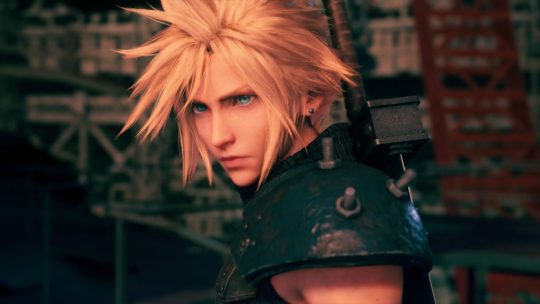
If you’re an FF7 fan reading this review, you’re probably here to find out how much of the game is present. Remake has been split into multiple parts after all, and this is just the first. Square Enix did this to cut as little as possible from the game, sparing no expense in remaking it to the fullest. Having now finished, I can say that they achieved that aim so far.
Content wise, there is a full game here, and my playtime ended at 43 hours. This entailed playing on Normal from start to finish along with being thorough and doing as much side content as I could. Further, additional perks and content become available once the credits roll. If you’re worried that you’re paying full price for an unfinished game, don’t; this is as much a full release as any newly numbered Final Fantasy title, and without Final Fantasy 15’s wealth of DLC required to make it whole.
“Pretty much every locale, scene, and story beat from the original is present in Remake.”
That said, Remake takes place entirely in Midgar, in contrast to the five to ten hours spent there in FF7. Pretty much every locale, scene, and story beat from the original is present in Remake. The additional time is primarily spent to bolster these moments, expanding on dungeons or smaller areas to give them the same scope. A tremendous amount of attention and care has been given to every facet, though. Character banter and dialogues are numerous, with a lot more cutscenes and chances for each to express themselves. Much of the runtime is used well, with new areas and events feeling interesting and consistent with Midgar’s style. Only a small fraction feels like genuine filler.
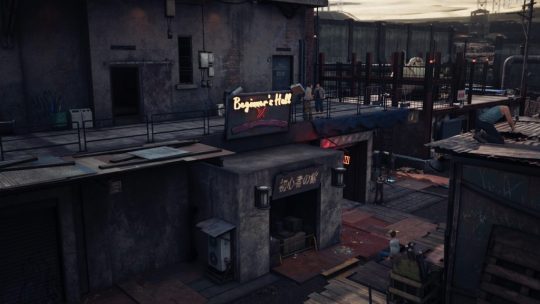
Final Fantasy 7 Remake is fairly linear at first. You’ll proceed through a chapter in a fairly direct fashion, with some side areas and branching paths to explore for treasure and extra fights. Once you move to the next chapter, you likely won’t be coming back. There’s a handful of areas where the game opens up, allowing you to explore a more populated area and take part in side quests and mini-games. One area relatively late in the game opens up quite a bit more, bridging a couple of areas together and allowing an open-ended respite before funneling you towards the final few chapters.
You’ll gain access to a chapter selection function once you beat the game, however. This lets you go back with an experience/AP gain increase and find anything you missed, as well as access the post-game content. I’ll come back to specifics later. So, how does it play?
Mechanics, Materia, and More
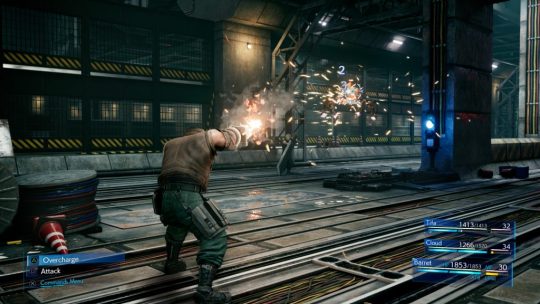
Final Fantasy 7 Remake continues the trend of Square Enix games becoming more cinematic and action-heavy in battles. If their aim is to make a playable Advent Children, they’re getting pretty close. This time around, the Active Time Battle (ATB) system of old has been merged into this for a pretty compelling take on an action/RPG.
You start the game as the main character Cloud. Combat will consist of utilizing his basic attacks, as well as manually guarding or dodging incoming damage. Your ATB gauge fills over time and increases when you strike, at which point you can open a menu to expend it. Time slows dramatically in the menu, letting you select from abilities, magic, and items. You can hold up to two bars of ATB (with the option of a third later), and every menu action requires at least one to use. These abilities and spells can be interrupted, but they hit considerably harder than your basic attacks. The damage difference is noticeable, so don’t come in expecting a pure action game; you’ll need the turn-based menu abilities to progress.
Once you get other party members, you can freely swap between them with a D-pad press. Characters you aren’t controlling will play defensive and try to get attacks in when safe. You’ll be the one ordering them to use menu abilities as they build ATB, though, and it becomes quite intuitive to cycle through them as you need.
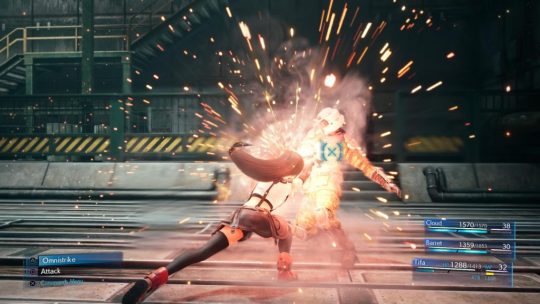
To keep things fresh, each party member has a set of different mechanics and playstyles. All have an attack string and guard/dodge options, but that’s where similarities end. The triangle button is dedicated to the character’s unique actions. Cloud swaps to a slow-moving, hard-hitting Punisher stance, Tifa has finisher attacks based on the stacks of an ability she has, and so on.
“Of the handful of hybrid action/RPG systems the series has tried, Final Fantasy 7 Remake definitely feels the most well-done.”
Charging time is pretty slow if you aren’t getting in the thick of it, but this also leaves you quite vulnerable to attack. Guarding is a trade-off, as it slows your passive ATB gain dramatically, so trying to stay aggressive and dodging smartly is encouraged. This is further compounded by each enemy having a break meter below their health; hit them enough or with certain attacks and you’ll pressure them, which usually stuns them and makes them take more break damage. Max it out, and you’ll stagger them, wherein they’re completely stunned and take a large increase to all incoming damage for a time.
Of the handful of hybrid action/RPG systems the series has tried, Final Fantasy 7 Remake definitely feels the most well-done. It avoids the spamming of items from Final Fantasy 15 and ends up feeling like a Final Fantasy 13 that you actually control.
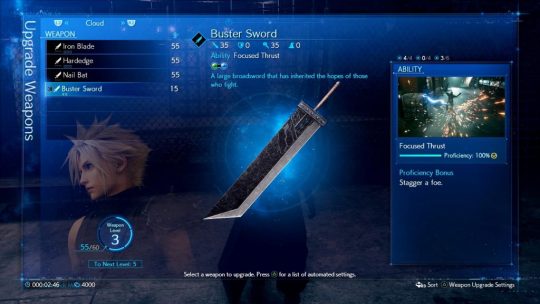
If this seems basic, there are further ways to supplement your moves. New abilities are gained in two ways: learned from specific weapons, or gained by equipping materia. Weapons are spaced out throughout the game, and each has a specific ability. Use that ability in battle a handful of times and you’ll achieve proficiency with it, whereupon you can use it regardless of your weapon.
Materia is the major noteworthy mechanic from FF7, and it’s been carried over almost identically to Remake. You’ll find materia orbs as you explore, and these can be set to slots in weapons or armor to gain their abilities. Furthermore, you’ll level the materia through AP gained after battles. A Fire materia will grant the Fire spell to the character while held, for example, and can be leveled up to access Fira and Firaga. Materia can be freely exchanged between characters out of battle, and most strategies for tougher fights will hinge on your setup. Different materia types can offer passive buffs, active abilities, or even massive summons that can be used only in specific fights.
At first, you won’t have much materia to play with, and even fewer slots in your gear to equip them. Cue Remake’s weapon upgrade system. Every time a character levels up, they’ll get 5 SP to spend, with bonus SP available from side objectives later. Each weapon has a unique “core” skill tree, and SP unlocks nodes on it. Each unlock grants the weapon new passive stats, modifiers, or even materia slots. At certain level thresholds, you’ll gain access to new sub-cores to further customize them.
What’s more, each individual weapon gets all your SP retroactively, so no need to pick and choose which to invest in. This means that if you like Cloud’s Buster Sword, you can absolutely keep it relevant throughout the entire game. All weapons have their own unique identity now, with stat priorities and abilities that you can prioritize based on circumstance or playstyle. The build options are quite diverse, and since you can reset them for a small gil fee, there’s no wrong way to approach it.
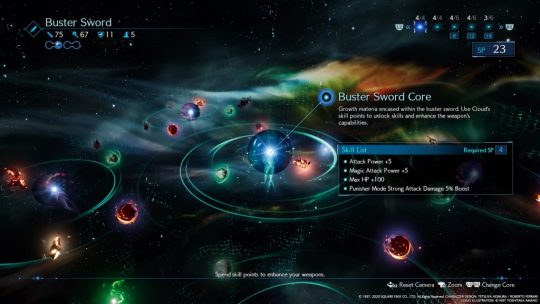
All these systems are in service of allowing you to customize your characters for the battles to come. Each ability has its uses, and there’s a good selection of materia to play around with. What I found most limiting about the battles, then, is the action parts.
Those who played the demo might have expressed some misgivings about the lack of variety in Cloud’s moveset. For those who feel that this is pretty basic, I’m sorry to say that it won’t get that much more diverse. Almost every ability and materia is one selected from the menu, not in your basic attacks. The different playable characters and conditions of encounters might shake things up, but it’s the ATB spenders that receive most of your attention.
I found this especially disappointing because my expectations were set quite high from the outset. Exploring down a side path in Chapter 2, mere minutes after where the demo ended, I found the Deadly Dodge materia; this changed Cloud’s attack string immediately after a dodge into a larger AoE one. Finding this so early eased my fears that the combat would feel similar for the whole runtime, then! Surely there would be other modifiers like it if I got this one so early?
Nope! This is almost the only materia like it in the whole game.
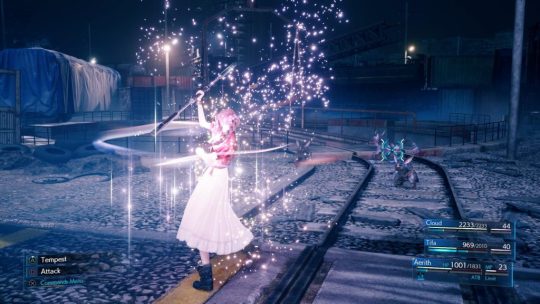
Much later, you can get the Parry materia (which lets you do a short hop and strike back if using dodge while guarding), and that’s about it. All other materia like it is simply a passive effect or occasional long cooldown. Otherwise, it’s all menu abilities that require ATB. This was tremendously disappointing to discover, and more options like that to personalize my general moveset would have been so much nicer to have. Even something like a perfect guard would have been great, though at least Cloud’s Punisher mode has counters on block. Perhaps that’s on me for coming to Final Fantasy 7 Remake having just played Devil May Cry 3, but that’s how I felt regardless.
That misgiving aside, the battles are nonetheless fun experiences. Bosses in particular tend to be larger than life affairs, with multiple parts to attack and various phases of the fight that change their mechanics. Again, those who played the demo will be pleased to note that more bosses play in the vein of Scorpion Sentinel than not. Some encounters can be pretty challenging, though for every game over I encountered (maybe half a dozen), a quick adjustment to my materia loadout and shift in strategy saw me triumph next time.
“There was a hell of a lot to love about the battles in Final Fantasy 7 Remake, and even if I had been hoping for more, it still stands out as a damn good time.”
Even regular enemies have individual mechanics. The circumstances by which the pressure and stagger systems are applied is unique to most enemies, so learning and exploiting their weaknesses makes the experience much smoother. There was a hell of a lot to love about the battles in Final Fantasy 7 Remake, and even if I had been hoping for more, it still stands out as a damn good time.
Mini-games are also interspersed throughout Final Fantasy 7 Remake. Most are variations of what was in the original, but there’s been a few added just to break up the routine. They were enjoyable for the most part, so there’s not much to say about them save that I appreciate the inclusion. There’s also a coliseum, letting you fight specialized groups under set conditions in exchange for unique rewards.
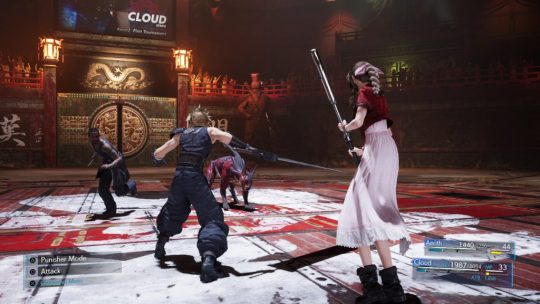
After the credits roll, you’ll gain access to the Chapter Select and can revisit any part of the game. You’ll also unlock Hard Mode, which doesn’t serve as a difficulty selection for a new game; instead, you can activate it when accessing Chapter Select. Hard Mode locks out your items and stops MP recovery from rest spots, but offers unique collectibles in exchange. New battles are added to the coliseum also. Those who want more even after the game is over shall find there’s at least a little to check out.
Overall, Final Fantasy 7 Remake kept my attention for the whole runtime. The only real lapses were a few areas of traversal that were overly drawn out, and some of the side quests felt a little mundane. Even so, these featured additional cutscenes and conversations with the cast that really furthered the attachment to the world, so it at least felt worth it to do them once finished.
Tifa fans should do all the side quests in Chapter 3. Just saying.
Regardless, it was an enjoyable game to play. A little more concession to action mechanics would be great, but the hybridised action/RPG implementation was otherwise very impressive. Square Enix definitely seems to have arrived at a happy medium that previous Final Fantasy titles didn’t manage, and I hope they continue with it.
Presenting: Midgar!
youtube
Presentation is the shining star of Final Fantasy 7 Remake. The demo made it clear that Square Enix wasn’t messing around, and it’s honestly one of the most graphically striking games I’ve ever seen. If any concerns were had about that level being impossible to maintain consistently, they certainly kept it close. Some of the larger open areas — particularly the slums — suffer from character pop-in, delayed loading on textures (if they aren’t just rough or muddy outright) and other small nitpicks. In addition, some cutscenes with minor NPCs talking to party members can be pretty jarring. They simply cannot match the level of fidelity achieved in rendering the main cast or other notable characters.
When the main cast is the focus and the set pieces are rolling, though? It’s far and away beyond anything else the series — or Square Enix in general — has produced. There’s a lot more daytime than the original game, so there’s enough colour variety to keep it from looking bland. Mechanical dieselpunk designs weave into gritty but “lived-in” slum streets. A pristine plate sector at night gives way to rusting maintenance structures underneath. The tall, clean and imposing Shinra HQ is met with the garish lights and noise of Wall Market. Midgar is a fantastically designed place and a treat to explore.
It’s not just the city itself that is well designed, though. To Square Enix’s credit, they have taken the sometimes goofy enemy designs from the original and kept them completely intact. High fidelity or no, it’s not afraid to take an enemy that is just a spiky dancing frog and have it make sense. There are even character dialogue and bestiary entries that further suggest how they work or came to be. If things didn’t have to be changed, they weren’t; they were just reimagined and made to fit.
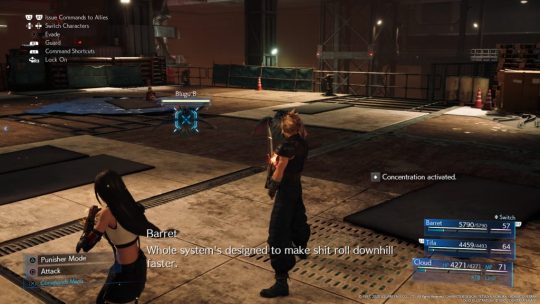
“Midgar is a fantastically designed place and a treat to explore.”
All of this visual and design splendour is furthered by the audio quality. From start to finish, the voice acting and direction is stellar. Shelving the voice actors that played the characters previously was unexpected, but the new cast absolutely nails their roles. Most have emotional moments or serious scenes that the actors manage to capture effortlessly. Even the NPCs and minor characters have quality voice acting. Shoutouts, in particular, have to be given to Barret’s VA for one particularly memorable scene, and to Hojo who is suitably creepy and sinister in every appearance.
Last but not least on the presentation front: the music. Oh man, the music. NieR: Automata laid the groundwork for implementing dynamic tracks, adding layers as needed to change the tone of the same track at just the right moment. Everything that was learned from that game was applied wholeheartedly to Final Fantasy 7 Remake, and then some. Musical cues and stings are on point, highlighting crucial moments in the best possible way.
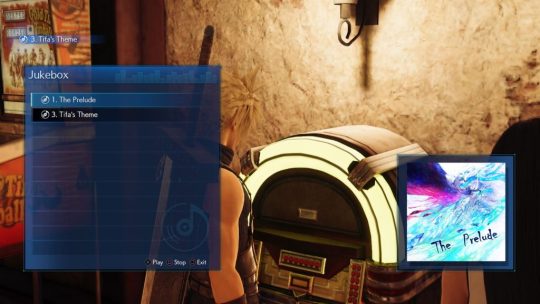
The original soundtrack is regarded as one of the finest works of legendary composer Nobuo Uematsu. Now, most of those tracks have been remixed or remastered in a slew of creative ways, but they almost always fit the tone required well. Some see multiple variations in different areas to wholly distinct effects. Music in the boss fights tends to really stand out, as the longer battles allow them to build up and crescendo during later phases. You know that the music is a highlight when songs are one of the main collectibles and each is a separate remix from their actual game appearance, all done in the style of music that might actually be made in Midgar’s setting. Genius.
There’s quite a lot to unpack and respect about the game on presentation. But all that presentation is in service of one thing: telling the story.
Reunions
I fully intend to avoid spoilers, so I will keep this section relatively brief.
The story of the original Final Fantasy 7 is one of the major elements that left a mark in gaming. These characters, their world, and their tales are iconic and beloved. Every moment of that story has been retained in full, just as Square Enix originally intended. Some trailers have hinted at adjustments and new developments — especially the launch trailer, which I encourage you not to watch for fear of spoilers — but this accuracy was paramount to the developers.
It���s safe to say that they achieved this. Every notable character, conversation, or location from the original game is included in Remake in some way. There’ll be adjustments, of course; they’re displayed in high fidelity and voice acted this time, so concessions will need to be made. But it’s all here, and the attention to detail in places was honestly staggering.
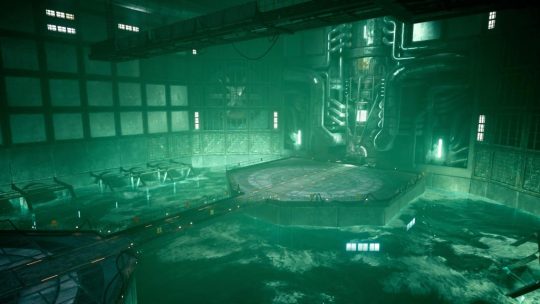
With that said, Square Enix had no intention of just retelling the same story verbatim. Additional scenes and moments have been sprinkled all throughout, with at least one early chapter composed entirely of new events. All of it builds on the original framework, strengthening it further. There’s more character growth, banter, and interactions between the cast than ever before. It ends up making them feel so much more real and believable. Even characters I wasn’t certain about initially won me over by the credits. This isn’t limited to the cast either, and gives the same treatment to villains and NPCs.
The fact that this is only a chunk of the complete tale means that certain events, characters, and flashbacks have been brought forward in the timeline. You’ll be seeing Cloud get headaches or recall memories of his hometown right out the gate… and that’s to say nothing of Sephiroth. Even so, all of these concessions are handled with the same care as the rest of the game, so their placement fits and strengthens the whole. Better to portray these scenes and build up the characters now than have them appear out of nowhere 10 hours into a second game, right?
Now… thus far, I’ve been talking purely about parts that primarily concern the original work. If this praise was also true of the wholly original plot threads and changes, I’d have no issues whatsoever with Remake’s story. Unfortunately, that isn’t the case. Far from it.
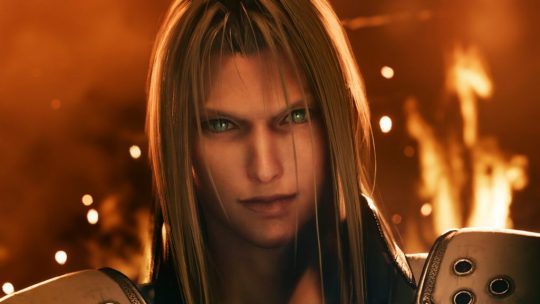
Early on, there will be a couple of divergences to the story that seem to be setting up a new sub-plot. These divergences increase in volume over time, and grow exponentially in the last two chapters. All the original beats remain, but they’re interspersed with these divergences, leading to a new climax and expanded conclusion.
“Genuinely, I was loving my time with it. But if the game had been a tasty meal up until that point, the final section soured it.”
And here is where it all started to come apart for me. For a brief while, I was ripped out of Final Fantasy 7 and dumped heavily into an unholy marriage of Advent Children and Kingdom Hearts. It was awkward, it was confusing, and it left me shaking my head in dismay. It felt massively out of place.
Did this part have to change so dramatically? Maybe. It wasn’t a true climax or game-ending point in the original, after all, and I expected some new conclusion and an added boss or two to cap off this experience. Yet, until now, it had been such a solid remake that made measured changes to supplement the classic story. Here, at the eleventh hour, it jarringly erupted into a massive spectacle that honestly felt like underdeveloped fanfiction.
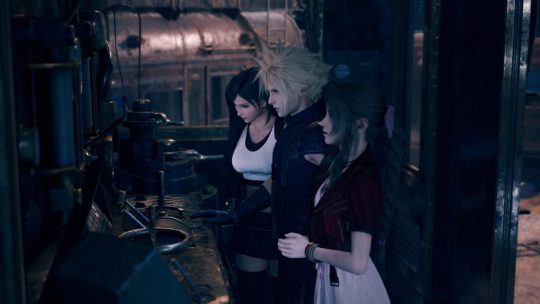
When I say spectacle, I mean that it was spectacular to behold in terms of graphics, sound, scale… but it comes at a huge cost, and that cost is the integrity of the story going forward. This finale and the accompanying changes have massive implications for the future installments of Remake, all of which feel like they’re going to ride the divergence train at full speed away from the classic plot. Suddenly, the insane turns that things like Dirge of Cerberus took are looking far more likely in the future.
I had been enjoying Final Fantasy 7 Remake throughout the entire runtime, whether it was new or old material. Genuinely, I was loving my time with it. But if the game had been a tasty meal up until that point, the final section soured it. This isn’t just because they tried something new, either; I could easily forgive it if it was just a new thread that tried, landed flat, and wrapped up. No, this sudden divergence has ramifications that could potentially change all future installments in dramatic ways from what was expected, and I now find myself lacking confidence that it can succeed.
In conclusion: old stuff? Great! Supplementary additions to old stuff? Also great! Character writing, development, and worldbuilding? Excellent! Brand new stuff? Middling at best, potentially disastrous at worst. Most of my grievances with the game are almost entirely to do with that final section. I fully admit to bias in the kinds of stories and developments I like, so your mileage may vary. But I cannot say I walked away from the ending feeling happy.
A Final Fantasy For Fans and First-Timers
One of the big questions approaching this game is, inevitably, “Should I play this if I haven’t played the original?” That’s an easy answer: yes. Everything is here that made Final Fantasy 7 such a stand out of its era, delivered with some of the finest presentation we’ve seen in triple-A video game development. It’s a fun action/RPG hybrid with solid gameplay systems, a strong story, and a set of well-realized characters that suitably develop and bond over time. Fans of the original will inevitably spot more references or appreciate the extra nods, but even newcomers should be able to slip in and find plenty to enjoy.

Next: should you play this now, before the other parts come out? That’s a more tentative response, but yes. Had I not walked away from the ending with such mixed feelings, it would’ve been easy to recommend. Even without knowledge of the source material, the main story and throughline here is clear to follow and wraps up nicely. It’s mostly the setup of larger threads and what’s to come that have me so hesitant to recommend it, and I don’t think the ending was handled well. Buyer be warned, regardless.
“Final Fantasy 7 Remake is arguably the best non-MMO Final Fantasy game released in a very long time.”
Final Fantasy 7 Remake doesn’t replace the original. That’ll be true even when all parts have been fully released. Final Fantasy 7 will be a generational touchstone of gaming with a legacy that has lasted decades, and will remain long after the hype for Remake has cooled. I don’t foresee that same legacy being granted to Remake once the dust has settled, but it nonetheless stands with Resident Evil 2 Remake as a testament to the quality such a project can aspire to.
This is still one of the most excellently presented games I’ve ever experienced, and with a few tweaks for the next installment, that excellence might extend to gameplay and story too. Whatever misgivings I may have going into future releases, it’s undeniable that this was an enjoyable 42 hours marred by a single bad one. Even so, Final Fantasy 7 Remake is arguably the best non-MMO Final Fantasy game released in a very long time. Despite my qualms, it’s been a welcome Reunion.
April 6, 2020 6:00 AM EST
from EnterGamingXP https://entergamingxp.com/2020/04/final-fantasy-7-remake-review-for-the-reunion/?utm_source=rss&utm_medium=rss&utm_campaign=final-fantasy-7-remake-review-for-the-reunion
0 notes
Text
Title Chaos;Child Developer 5pb. Publisher PQube Release Date October 24, 2017 Genre Visual Novel, Mystery Platform PS4, PS Vita Age Rating ESRB – Mature Official Website
As with many visual novel series, the Science Adventure series has a somewhat spotty history of official English translations. The first time was with JAST USA’s translation of Steins;Gate in 2014. It was followed by Steins;Gate 0 last year, and now with Chaos;Child, both from PQube. Unfortunately, the prequel Chaos;Head (along with the more recent Robotics;Notes) never got translated, but as I will cover later on, it’s not that important for the story.
Chaos;Child is set in 2015 in Shibuya, six years after the New Generation Madness series of murders and Shibuya Earthquake from Chaos;Head. It follows Takuru Miyashiro, a third-year student at Shibuya’s Hekiho Academy and the president of its newspaper club. He’s joined by the other members of the club; his childhood friend Serika Onoe, his adoptive older sister Nono Kurusu, his best friend Shinji Itou, and the quiet Hana Kazuki. Later on, he’s joined by the literature club’s Hinae Arimura and the mysterious, childlike Uki Yamazoe. The group investigates a new series of bizarre murders, dubbed the Return of the New Generation Madness. As the story progresses, the player along with Miyashiro learns more about the killings, the Shibuya Earthquake, the strange Sumo Stickers appearing around town, and the other members of the club.
It’s interesting to see how the game calls back to the others in the series.
The story is structured into five primary routes with six different good endings, and a variety of bad endings depending on the route you play. The first time you play through it, only the main route is available, and individual routes for Hana, Hinae, Uki, and Nono become available after you see the main route’s Over Sky ending once. In all playthroughs after the first, the story is influenced by the player’s choices in the Delusion Trigger system. The Delusion Trigger returns from Chaos;Head, where the player can choose either a negative or positive delusion for Takuru to experience at specific points in the story. After seeing all the endings, the final true story becomes available, revealing the true nature of Chaos Child Syndrome. The individual routes all break off from the main story at different points and reveal a lot of information about each character, their past, and their motivations than you can get from the main story.
I like the various ways the game presents conversations.
The characters themselves are all interesting in their own way. They have their own mysteries and arcs throughout the main story and their individual routes, and it is incredibly interesting to see each develop and learn more about them. Takuru in particular changes significantly throughout the game. He gradually grows more likable as the story progresses, after starting out somewhat pretentious and downright annoying. Seeing how the characters evolve, especially in their specific routes, is incredibly satisfying, and the story is incredibly well-written and structured to back it up.
Chaos;Child leans more heavily on horror than previous games in the series. The murders themselves are genuinely disturbing and often gory, as are many of the negative delusions throughout the game. That being said, the story is very well-paced, with most of the chapters good about periodically easing up on the tension before getting more intense in the last four chapters and not letting up until the end, keeping it from ever getting too tiring to read. The game also shifts perspectives throughout, all to build up suspense, keep the reader invested, and drive the central mystery forward. It’s a device that Chaos;Child uses to great effect; it was never hard to follow, but still kept me on my toes and unsure about what direction it would take.
The waving border on the screen shows that this is just a delusion.
The Return of the New Generation Madness continues on the next page ->
Somewhat more prominent than the small icons in the corners of the screen from Chaos;Head.
Functionally, the Delusion Trigger system is the same as in Chaos;Head: at certain points in the story, the player chooses a positive delusion, a negative one, or neither. However, the visual effects are completely different; while Chaos;Head had small icons in the corners of the screen, Chaos;Child has large graphics that occupy the edges of the screen, which move to the middle when selected until the delusion itself starts. During delusions, the edges of the screen are covered with a waving border, colored teal for positive delusions and red for negative ones. It’s much clearer about when it’s available and what’s happening than in Chaos;Head, and also reflects the overall aesthetic of the game better. It’s an interesting replacement for a regular choice system and makes it somewhat less clear how to access the characters’ routes, at least until you try it once.
In addition to the Delusion Trigger, Chaos;Child has the Mapping Trigger system, where the player compiles information about the case by attaching photos or notes to specific places on a map of Shibuya. It helps the player recap and keep track of what’s happening, as well as the murders from Chaos;Head. It helps the player feel involved with the mystery and investigation process, more than one might ordinarily if there was only reading. Ultimately the Mapping Trigger isn’t a huge part of the game, but it’s a nice touch regardless.
It’s always a nice touch when visual novels have back sprites.
In general, the presentation of Chaos;Child is very impressive and well-done. While the art style is very different from Steins;Gate, the sprites are animated the same way, with the characters’ mouths moving along with their voices as they speak. The art style is similar to Chaos;Head, although somewhat more mundane than the unique style of Steins;Gate. There’s a surprising amount of flexibility in the way the game can set up scenes, with the variety of sizes and positions the sprites can take as well as each character having a back sprite. There’s also the tips list to provide in-universe definitions as well as explanations of things like internet slang, technical details, and other information. There are also some smaller touches, such as the auto-skip remaining active even during unread text, so it can automatically resume skipping once the player gets back to unread text.
The translation isn’t perfect. There’s several errors scattered throughout the game, mostly incorrect word forms, missing spaces, and unnecessary or missing punctuation. On top of that, there are several cases where the text in the text box is different from what’s shown in-game, such as the chapter titles which include an English title, generally similar but not identical to the localized chapter title, and a Japanese title which translates to something different. There are also some cases where text in the background isn’t translated while it is at other times, as well as two lines of untranslated text at the end of the main route. The errors in particular somewhat break immersion, and a patch to fix them at some point would be appreciated.
One of many unfortunate errors in the text.
All the voice actors play their parts well, especially considering how emotional the characters get in certain scenes. The soundtrack is solid, with a few tracks, in particular, standing out from the others. The vocal themes are particularly impressive; the PS4 version I played includes both the original Xbox One version opening “Fictional Youth” as well as the PlayStation version opening “Singularity”, both sung by Kanako Itou, also known for singing the openings for other Science Adventure works including Steins;Gate anime opening “Hacking to the Gate”. Other than that, the background music does a good job of accentuating the variety of tones at play in different parts of the game.
Chaos;Child is one of the more substantial visual novels out there, with all the endings and some time spent trying to figure things out taking over 50 hours in total, and the first playthrough alone taking just over 30 hours. It’s a good amount of content for $59.99 USD on PS4 or $39.99 USD on PS Vita. However, it didn’t feel that long; it’s an intense and engaging mystery-horror, paced just right to keep it from getting exhausting to read. The characters are all well-developed and get their chance to shine in their own routes. However, I wish the translation was more polished, and that it was a bit clearer how to access one of the character routes. That being said, it’s still a good read for fans of murder mysteries or of the rest of the Science Adventure series, and one that I fully recommend.
[easyreview cat1title=”Overall” cat1detail=”” cat1rating=”4.5″]
Review copy provided by publisher
REVIEW: Chaos;Child Title Chaos;Child
1 note
·
View note
Text
Remnant: From the Ashes Review - Smoldering Shooting
New Post has been published on https://gamerszone.tn/remnant-from-the-ashes-review-smoldering-shooting/
Remnant: From the Ashes Review - Smoldering Shooting

It’s not difficult to pick out Remnant: From the Ashes‘ many influences. It mimics the format and grueling difficulty popularised by From Software’s Souls series, pitting you against increasingly complex bosses and teaching you through failure. It mixes up its combat encounters with AI direction similar to Valve’s cooperative shooter Left 4 Dead to make skirmishes exciting and unpredictable. Third-person shooting ties these two ideas together in a surprisingly cohesive way, which makes Remnant: From the Ashes a joyous action-adventure through a far less compelling world.
The world as you know it has been overrun by The Root–a force of sentient fauna with glowing red roots commanded by a single hivemind–driving humanity to the brink of extinction as they search for a miracle to end the nightmare. Washed up on a dark and gloomy island and torn down to the brink of death, you are the hero that one of humanity’s final settlements, Ward 13, has been searching for. You’re let loose on the world overrun by monsters to search for the Ward’s former leader in the hopes that the knowledge lost with him might help expose the core of The Root’s power and give you a fighting chance against the insurmountable foe.










Although its opening moments hold promise initially, Remnant’s world isn’t interesting beyond the surface. Its characters stick too closely to familiar tropes and feature little to no development as you fight their war for them. The distrustful mechanic will happily craft new items for you but never shrugs off her off-putting demeanor, while her partner has nothing deeper to share beyond his initial backstory, for example. Inhabitants in the Ward congratulate you on your actions outside of its walls, but it never feels like you’re progressing your relationships with any of them. This lack of personality makes Remnant’s big revelations fall flat, too, and by the time it starts collecting all of its stray stories into an understandable thread you’ll probably not care enough to take much notice.
The sheer visual variety of its world is more exciting. You visit four main areas outside of Ward 13, with each new one being strikingly different from the last. You start out in the desolate streets of an abandoned cityscape, exploring its dimly lit sewers and engaging in tense firefights on street corners. From there, things get far weirder. You travel to a blistering hot desert with oppressive metal labyrinths underneath just before you cut away the brush of a thick, dark forest illuminated by bright neon fauna. Remnant’s visual themes are all over the place, which doesn’t help its already confusing story. But while disjointed, the visuals are extremely well presented and beautiful to behold.
Remnant’s gameplay is recognizable thanks to its blend of familiar genres and tropes. On paper, the combination of Dark Souls-style high-skill combat with the ranged-focused gameplay of a third-person shooter sounds incompatible, but Remnant brings its own flair to its influences that ties them together in an interesting way. Procedural combat encounters are at the core of this. Enemies don’t have fixed placements in areas, with Remnant instead using a system to dynamically adjust both their positioning and density every time you enter an area to consistently provide a challenging skirmish. The unpredictability adds an enticing layer of tension to each combat encounter, where even small mistakes are punished by quick deaths at the hands of hordes of smaller, weaker enemies.
It’s initially frustrating to not be able to learn enemy placements and patterns, but Remnant’s forgiving approach to death balances this out. Although enemies hit hard and death is just a handful of mistakes away, you don’t lose tangible progress when you die. You don’t drop items or lose experience; instead, you simply respawn at your last checkpoint (large glowing red shrines similar to Dark Souls’ bonfires), with the route ahead re-rolled and changed to present you with a new challenge.
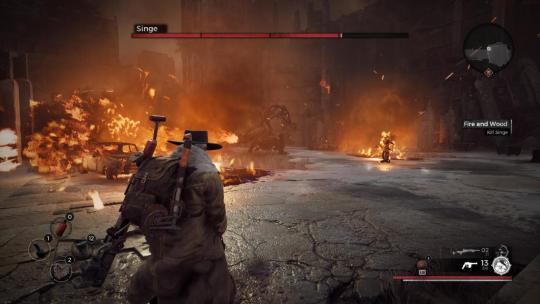










The emphasis on ranged combat changes the pace you might be familiar with from games of this ilk. You’re given the choice to get as up close and personal as you choose with short-range shotguns and submachine guns or remain as far as possible with slow-firing but powerful sniper rifles. Each weapon type makes you consider the encounter they’re best used for, but for the most part Remnant’s combat favors aggression. The number of enemies it throws at you and the cramped design of its dungeons make longer ranges difficult to work with, while highlighting the devastating stopping power of medium- to short-range weapons. This undercuts a lot of the weapons you’re able to purchase and craft, especially when taking into account the grind required for some resources you need to upgrade them. It was easy for me to stick to one loadout for the majority of my playthrough, incrementally improving damage instead of experimenting with new weaponry. Despite the dynamic combat, the stagnant nature of Remnant’s loot works against it.
Weapon mods alleviate this to an extent. Mods give your weapons an alternate firing mode, ranging from simple healing effects to devastating AOE attacks that can inflict a number of status ailments on enemies. Most weapons let you exchange mods freely, allowing you to experiment with a combination across your two equipped weapons to find a synergy that works best for your playstyle. The number of mods you can both find and craft is plentiful, but their variety is what makes them impressive, making experimentation fun. Their effects are even more important when playing Remnant with friends (up to two other players can join your game), where the collective group build is important to counteract the increased difficulty associated with group play.
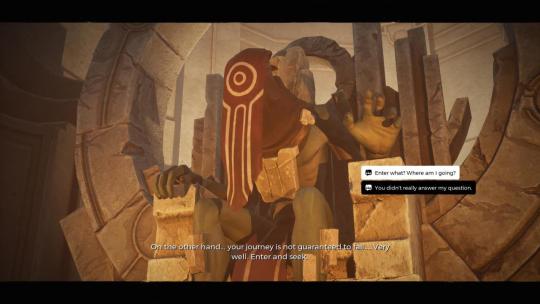
In both the case of weapons and mods you can craft, boss encounters play the biggest part in providing you with the most exciting options. Each boss drops a unique item that can be used in a recipe for either, bestowing you with either the unique abilities of the foe you just overpowered or a weapon to mark your momentous achievement. Both of these require rarer resources to craft, and even more to upgrade, which makes investing in them a difficult decision to make. But it’s impossible to not curiously venture back to your Ward after each boss encounter to see what new toy awaits, and even more satisfying to take it out into the world and fall in love with the power that was recently used against you.
Bosses also provide the best moments of Remnant’s combat, pushing you into new strategies that can force you to reconsider your current loadout. Some bosses make good use of ranged attacks, sticking as far away as possible and using small tells to telegraph dangerous attacks that can quickly kill you. Others are overwhelmingly aggressive, chasing you down and closing gaps that make it difficult to get shots off in between a flurry of dodging rolls. Although some bosses share some behavioral traits, each of them features unique attack patterns and abilities that make each encounter dangerous to tackle and equally satisfying to overcome. The order in which these bosses populate the world is also randomized, making new playthroughs different to an extent. It’s a confusing choice in practice, though, preventing you from predicting what boss-specific gear you can depend on at certain points during repeat playthroughs.
Confusing accurately describes Remnant: From the Ashes a lot of the time, especially when its combination of established ideas doesn’t mesh. But for the most part, the experiment is a success, resulting in deeply satisfying combat against creative and challenging enemies. Remnant struggles to effectively transfer that success over to an engaging loot system and an interesting story to wrap it all up, but when you’re blasting away foes with weapons crafted from the remains of your latest boss kill, it’s hard not to do so with a wide smile on your face.
Source : Gamesport
0 notes
Text
Story Time #2- Final Fantasy & Me:Part 2
The Reason People Should Be Afraid of Clowns:
I was gifted the PlayStation Final Fantasy Anthology at the end of the ‘04/’05 school year to celebrate my moving up in the world. On it was ported versions of Final Fantasy V and Final Fantasy VI, which had originally been released in the US for the Super Nintendo as Final Fantasy III.
I started out playing V a few days later. For some reason, it never grabbed me at all. I got through a good chunk of the game, then hit a troublesome boss and just stopped playing it. I still can’t remember anything about the game no matter how hard I think on it. Probably because it was overshadowed by what came next.
After rage quitting FFV, I moved on to VI and never looked back. Similar to IX, I was automatically captured by the game’s easy charm and emotional resonance. The characters in that game are so multifaceted and I found each of them to be wonderful in their unique way.
The one thing VI has that IX, unfortunately, does not is a fantastic villain. Kefka, the demented little fashion-challenged asshole, easily set the standard for things that make up the perfect villain to me. This guy had absolutely no motivation other than just wanting to watch the world burn, and is a key citation of personality traits you never, ever, want to encounter.
Comical as he was, Kefka scared the ever loving crap out of me, much more than any horror game or movie I’ve experienced since then (with the exception of Silent Hill 2), and I freaking loved it. Of all the memorable aspects of FFVI, that maniacal laugh is always the first thing to come to mind.
Me In The Spotlight, Losing My Religion
( readers with sensitive views on religion might want to avoid this part)
People always look at me like I’ve grown a second head when I tell them that a video game is the reason I became an Atheist. I agree that sounds a little extreme, but back in ‘05/’06 when I finally caught up to the rest of the world and got my hands on Final Fantasy X, it made perfect sense.
For the first time, I wasn’t the one in my circle of three close friends to acquire the game first. That honor went to my friend Mikey (that is not her real name), who had just been gifted the game and a Ps2 of her own. The problem was that she didn’t have a memory card and couldn’t afford one (they were anywhere from 25-40$ dollars at the time), and called me up one day desperately begging to borrow mine after having had to play through the intro of the game all the way to leaving Besaid island for the third time because her mom kept shutting off the system.
Of course I wanted to help her out, but this created a bit of a problem; I couldn’t lend her my memory card indefinitely because it would prevent me from enjoying my own games. The solution was for us to play through the game the first time completely in each others company. By that point we were used to getting through sections of games together, but this was the first (and last) attempt for us to play the entire game under the stipulation that the game could not continue unless both of us were there. So, naturally, I practically moved into her house for the summer.
Things started out fun enough. We ruthlessly made fun of the game for hours on end. We shared laughs and frustrations with the game’s mechanics, had fun recording amusing cut-scenes and lines of dialog (we made a YouTube poop VHS before YouTube was even a thing), and were just generally loving life at that point.
Then we get to fucking operation Mi’ihen.
That section of the game floored us both. We had just finished learning about Constantine and Crusades the year previous in school and had commented earlier about noticing the reference, though I never thought the game would ever try to give such a direct example.
For those in need of a quick refresher, Operation Mi’ihen was the part of the game where the Crusaders and Al’Bhed team up and try to use a new type of machina to defeat Sin. The operation fails, most of the people who take part are slaughtered by Sinspawn, and the Crusaders who survive are excommunicated by the church for going against the teachings, even though two of Yevon’s most prominent figures were on site to ‘Bless the Operation’. Operation Mi’ihen was the point in the game where the religious allegory really got heavy, and just kept getting worse from there.
After that section was over we both needed a break. I finally went home for the first time in about two weeks, and spent the next few days recharging my batteries until I was comfortable picking the game up again. We went back to joking about the game pretty easily, though the tone didn’t exactly improve from there. The next time the game broke me was during the revelation of Yevon and the Final Summoning.
The knowledge that the entire journey up to that point had been a lie, a pointless quest of willing Martyrs that were being deceived themselves hit me the hardest. During that part of the game I adapted traits of characters I hated the most. I was dumbfounded, whiny, frustrated, and unwilling to believe what was going on even though the evidence was being clearly presented. I was Tidus and Wakka combined, and at that point I hated myself for it. I came to really loathe Yevon and its real world basis.
When the game finally ended, I spent a few weeks in quiet contemplation. My friend wasn’t religious, and never had been, and couldn’t understand the extreme negative reaction. I was young, and at the time unable to formulate and articulate enough explanation while my feelings were still so turbulent. I distanced myself from her for a time while I tried to work it out.
All these years later I can finally put words to the metaphor I saw when I witnessed the end of the game. To save her world from Sin, Yuna sacrifices her fayth (the Aeons) and kills the dream (the Zanarkand utopia). The lie of Yevon is disbanded and the world enters an Eternal Calm.
I couldn’t explain it at the time, but I felt it. After coming to terms with everything, I renounced my faith in the church. Playing Final Fantasy X wasn’t the only catalyst, there were plenty of real world instances and influences that had me questioning even before the game, but FFX was definitely the boiling point.
X is the only FF game I’ve never been able to play all the way through more than once. I went back again after my friend let me borrow the game for myself in order to get through all the sidequests, but never progressed past getting inside of Sin. When the re-masters came out, I tried again and couldn’t make it past the Mi’ihen Highroad.
Final Fantasy X was a very good game, but it is still probably my least favorite of the ones I’ve played.
Horrible Feeling Redux- This Time With Fun Costumes!
I honestly don’t know why I bothered with Final Fantasy X-2 this time around. I guess there was a part of me that wanted to see if the fake world was dealing with the loss of Fayth better than I was. My first playthrough of the game took me about six hours, and I was left so angry I almost broke a controller.
Once again, it took a chance encounter and consult of a guide for me to realize I played the game wrong, and that by only following the game’s main story points I had missed about 9/10ths of the content and that was the reason the game felt incomplete and pointless. With frequent trips to the EB Games across the street to re-check the guide I eventually was able to 100% the game and get the actual ending.
I honestly don’t remember much of the plot, too much got drowned out in the endless repetitive mini-games and AP farming. I do remember liking the new characters, and that overall I was pleased with the re-visit to the world and how well the game handled the familiar while still being new enough to not feel like the same thing over again. I also must have watched that fmv of ‘1000 Words’ about a hundred times in that sphere dome (I had a file saved at the location so I could just watch it whenever). The take on the classic job system was interesting, but at the time I was a huge tomboy, and felt pretty offended that the game seemed to be trying to appeal to a female market by making the entire plot revolve around clothes.
All in all, X-2 gave me peace with X. As much as I complain about it, I did end up liking it, though it was a game I could have done without.
Ok readers, I know I promised XII with this part, but re-living the feelings of X took more out of me than I was expecting, so now it shall be lumped in with XIII, XIII-2 and XV. I do hope it’s as much of an experience reading it as it is writing. I’d like to hear some memories other people have with the series, if you have the time to share.
Also, the header for X is a line from the song ‘Losing My Religion’ by REM.
7 notes
·
View notes